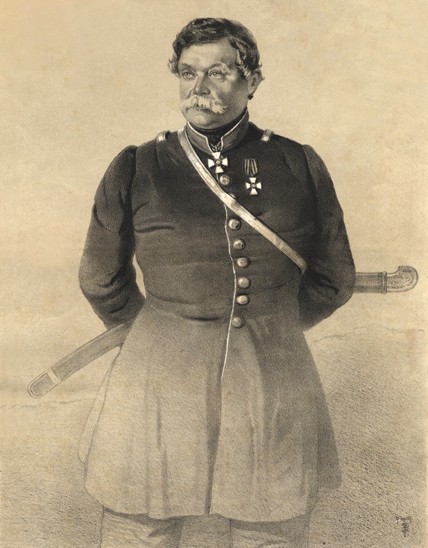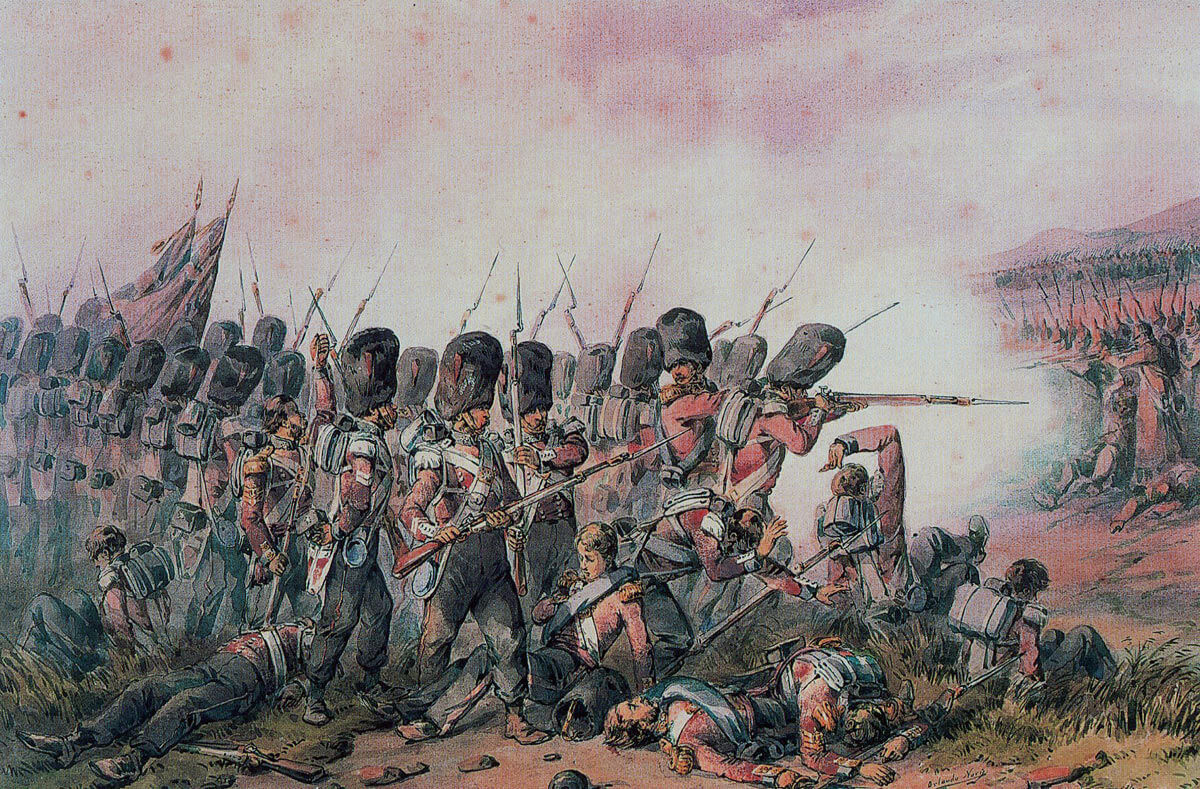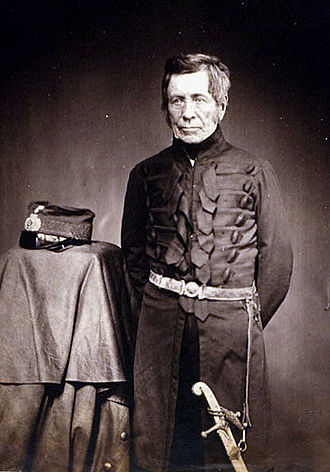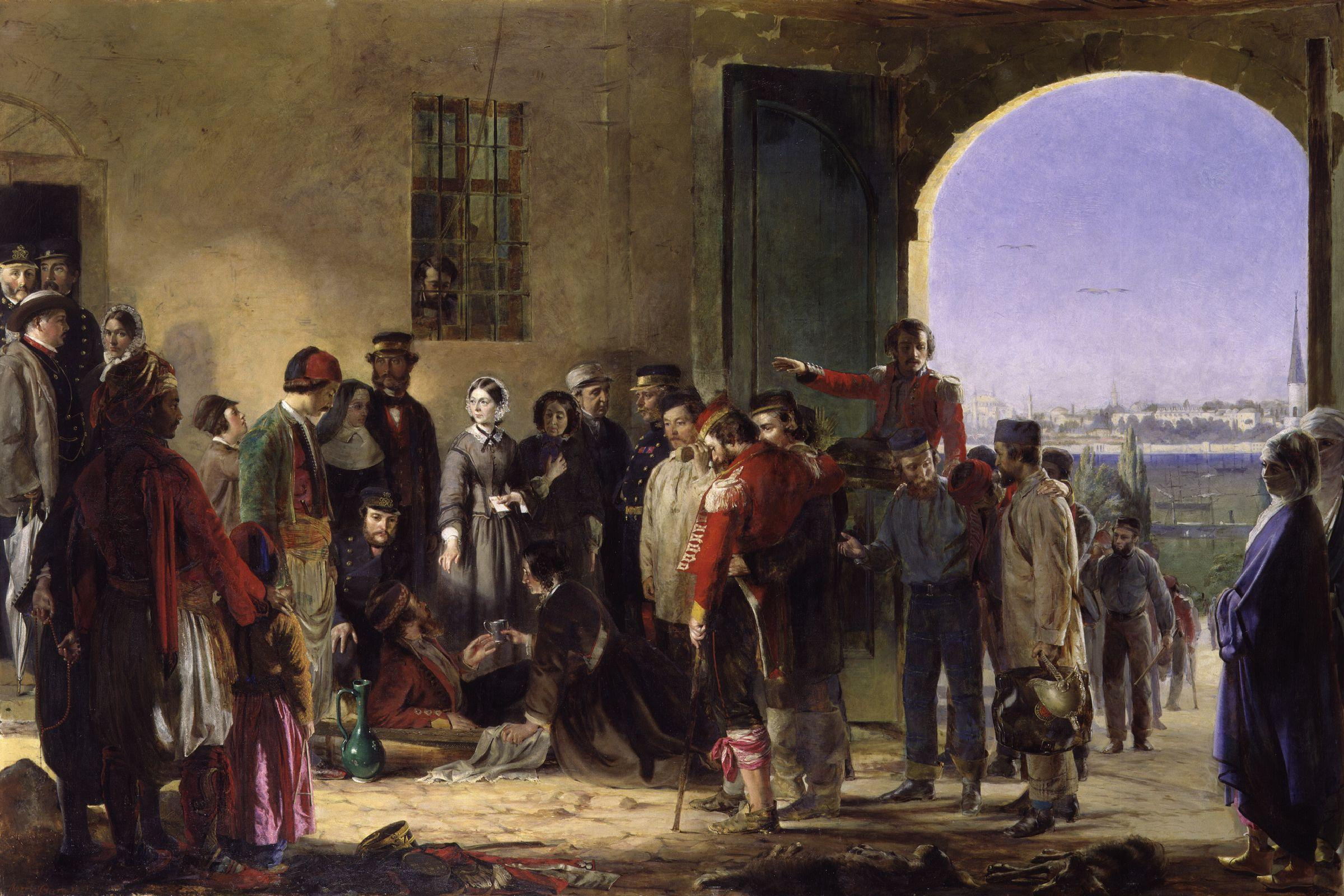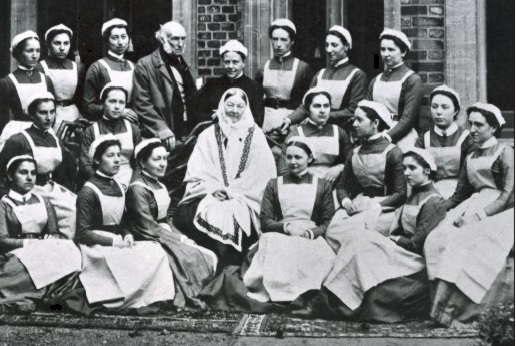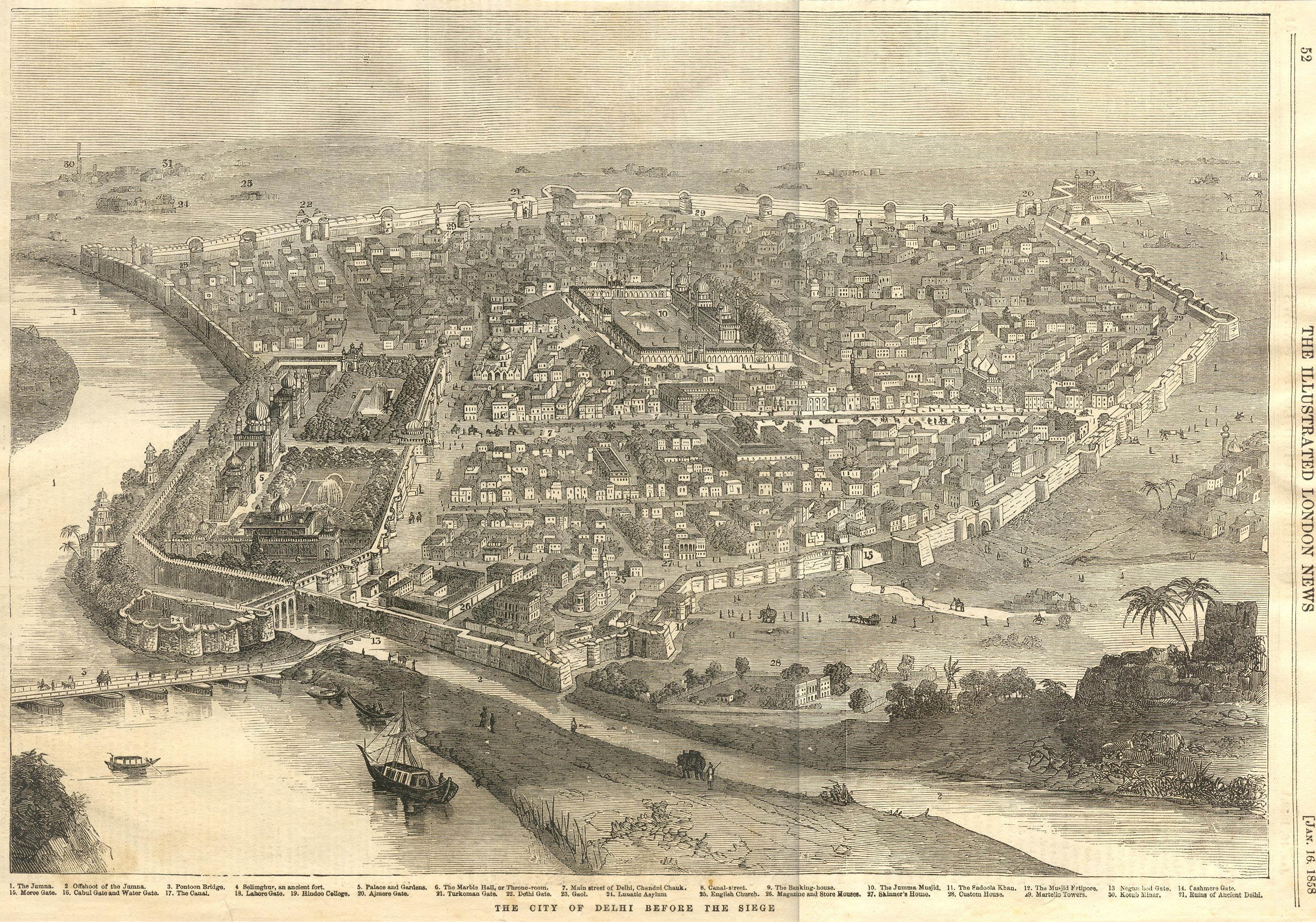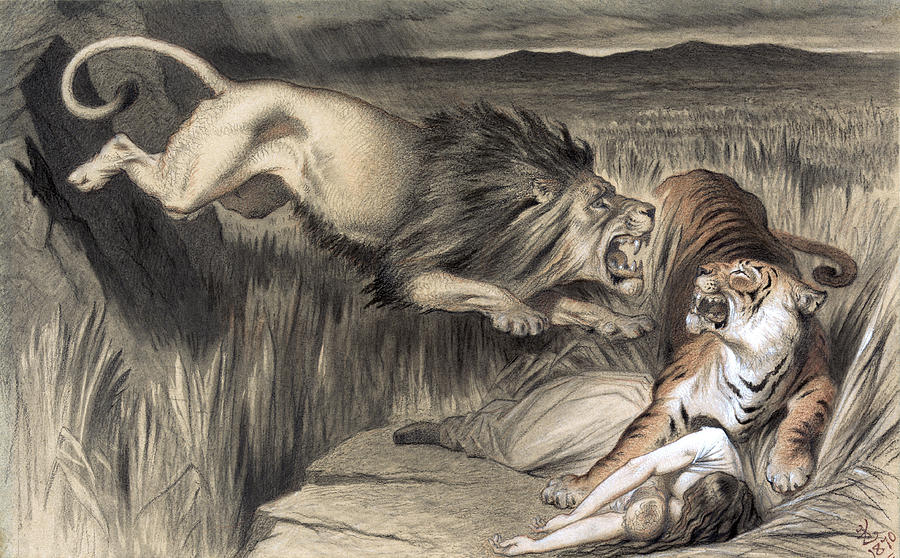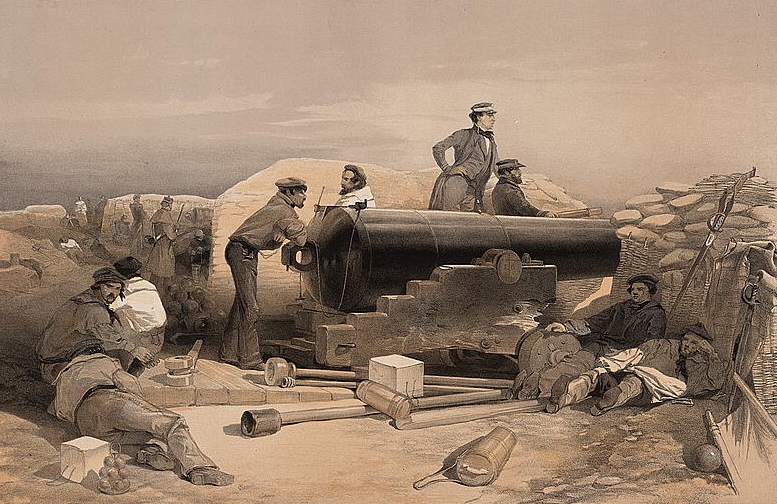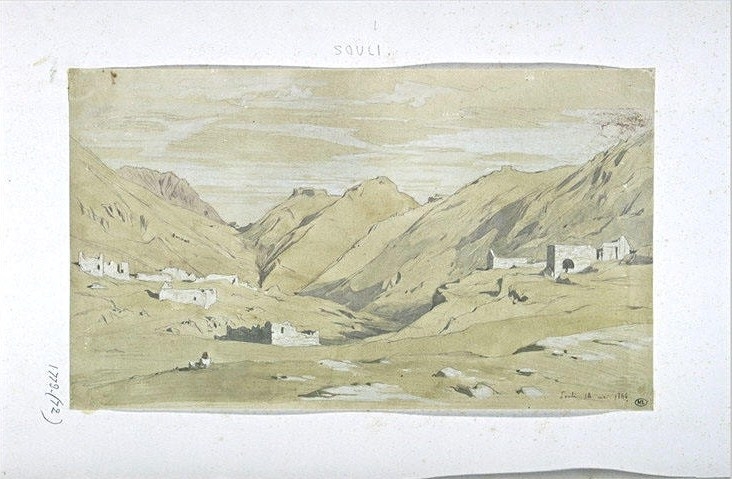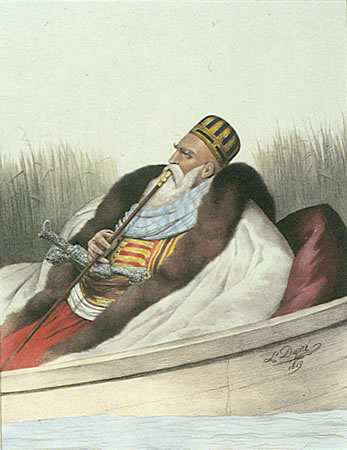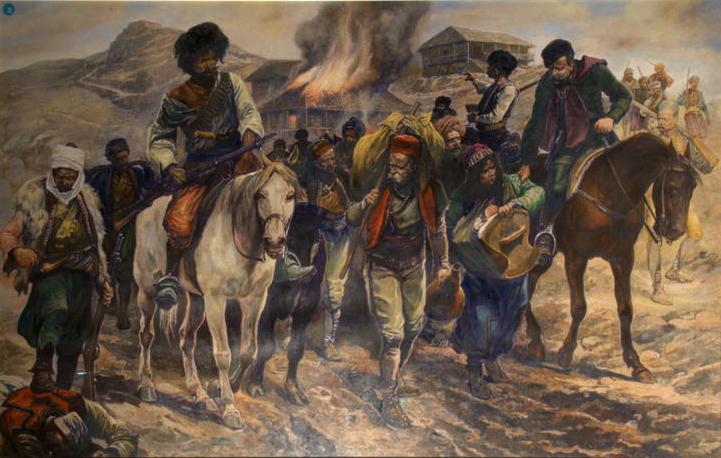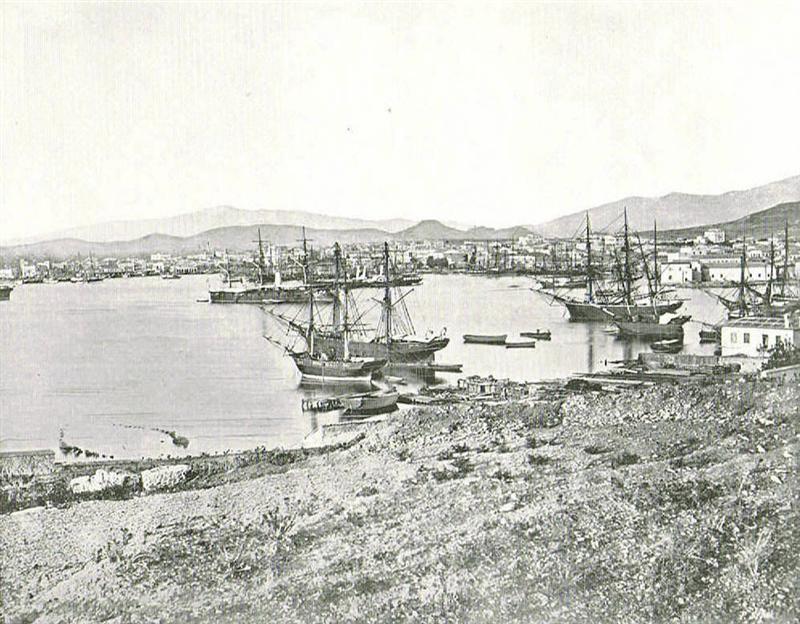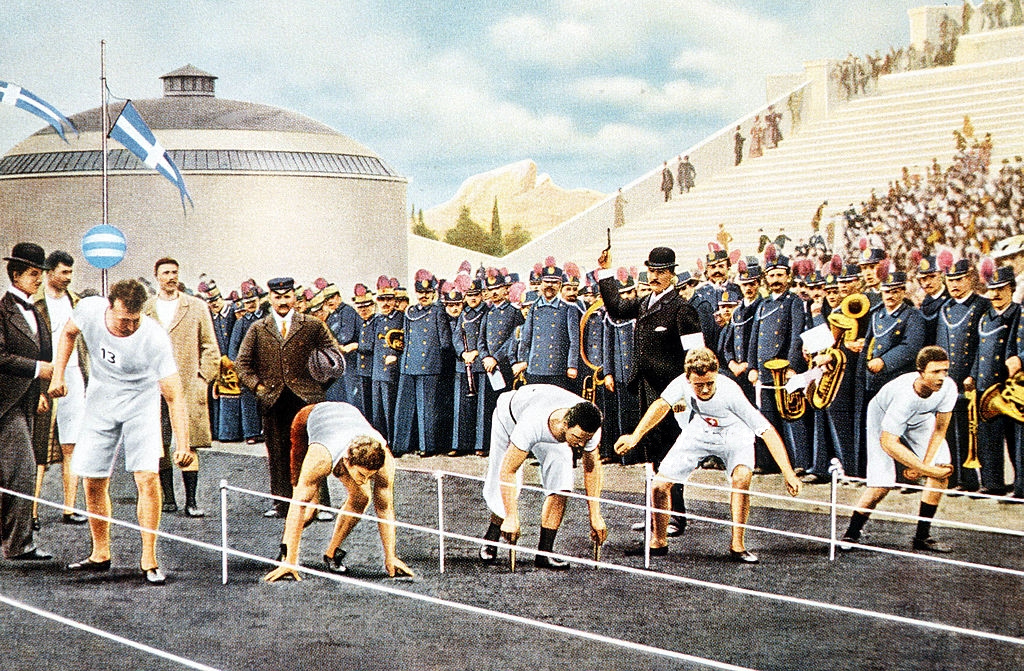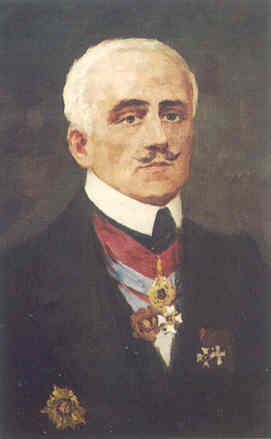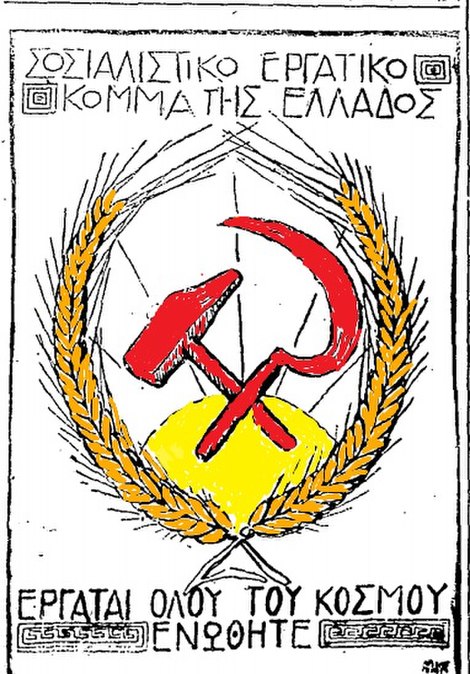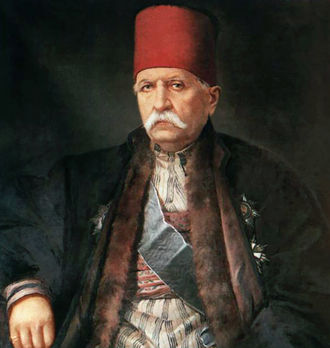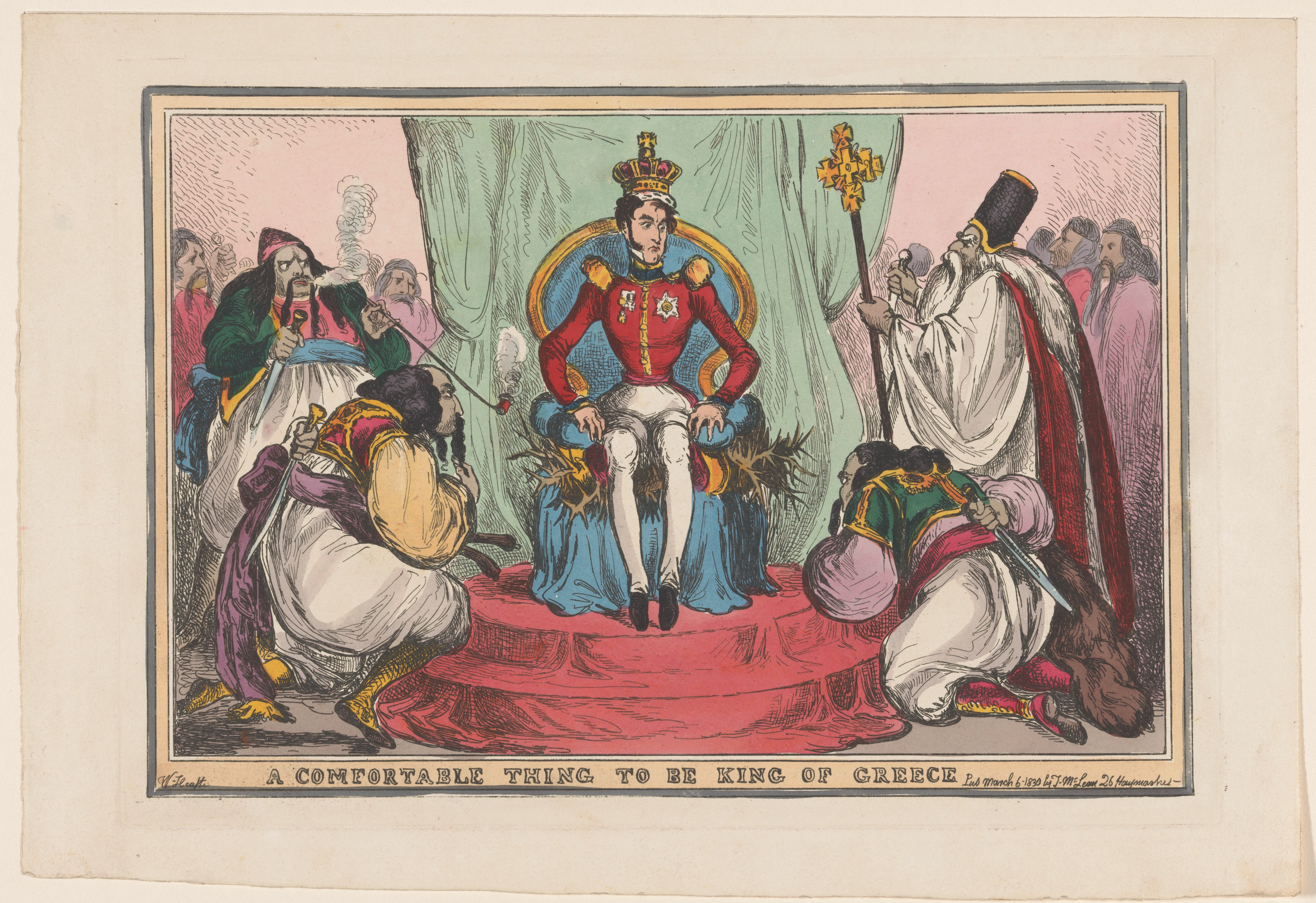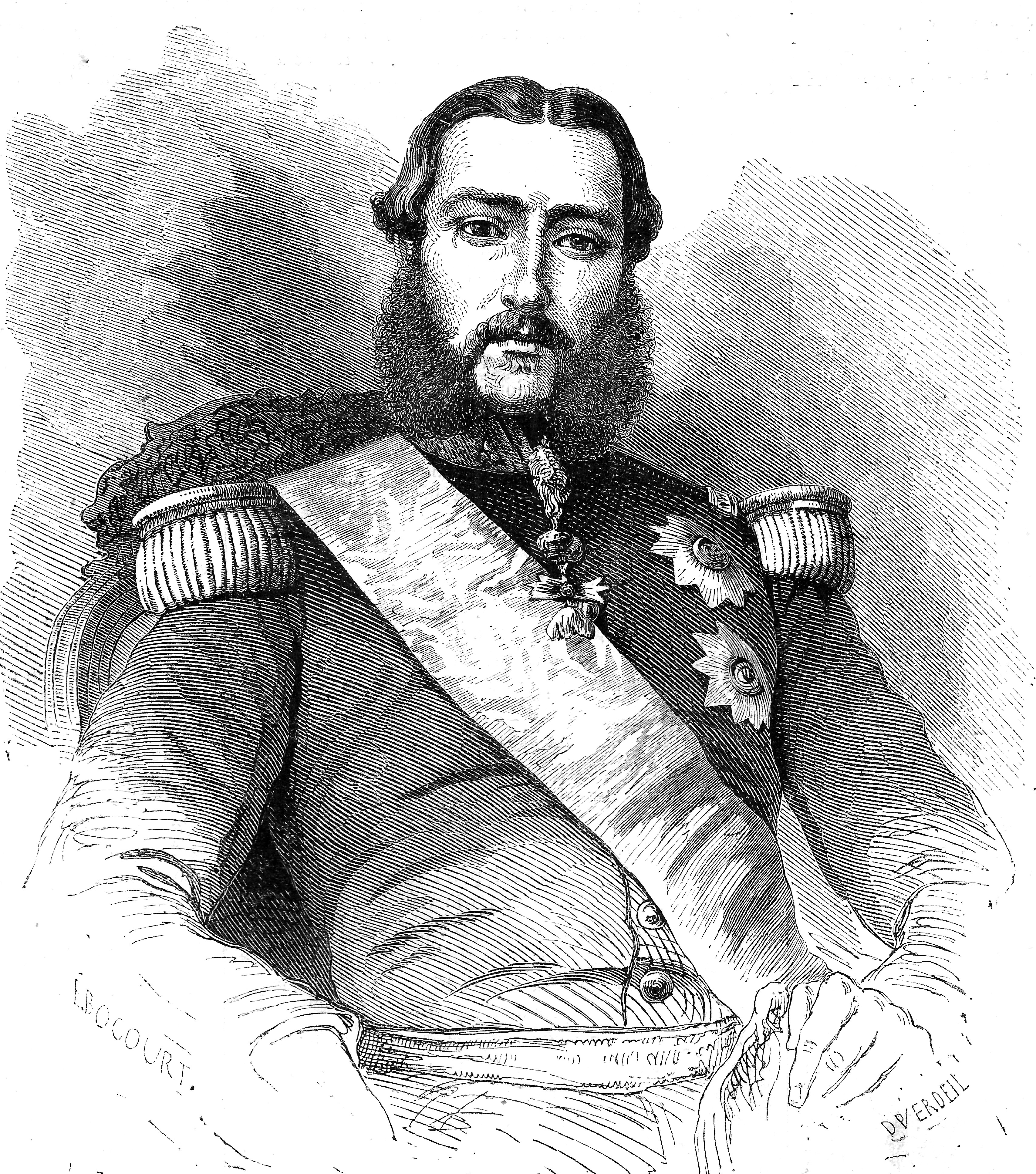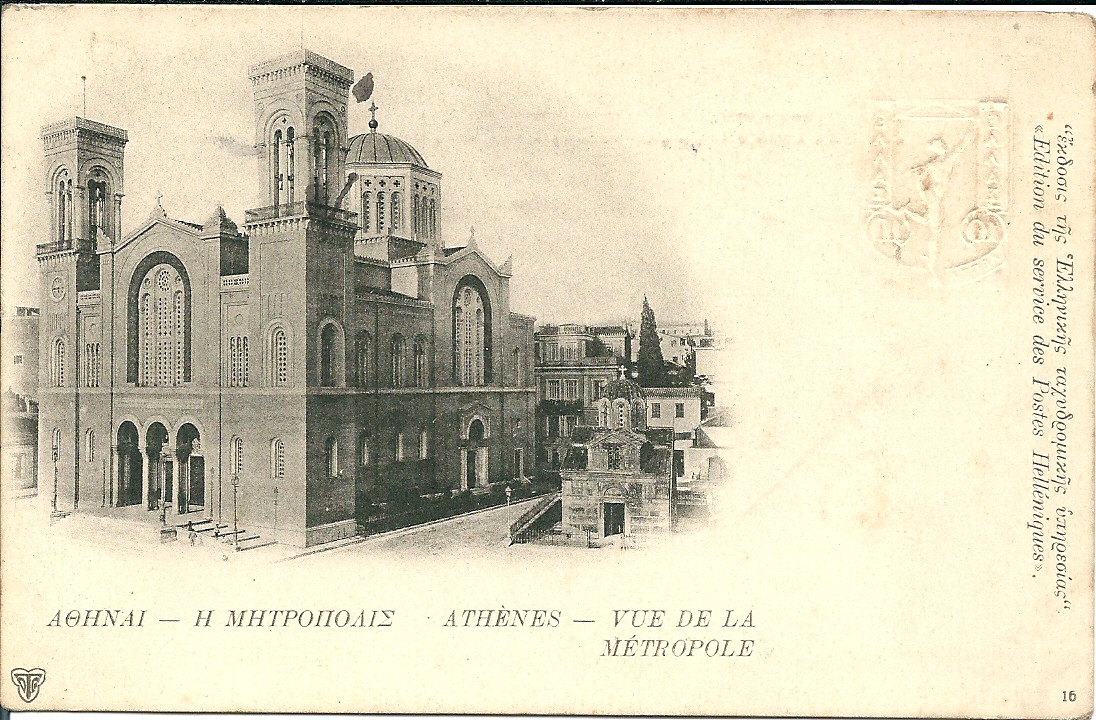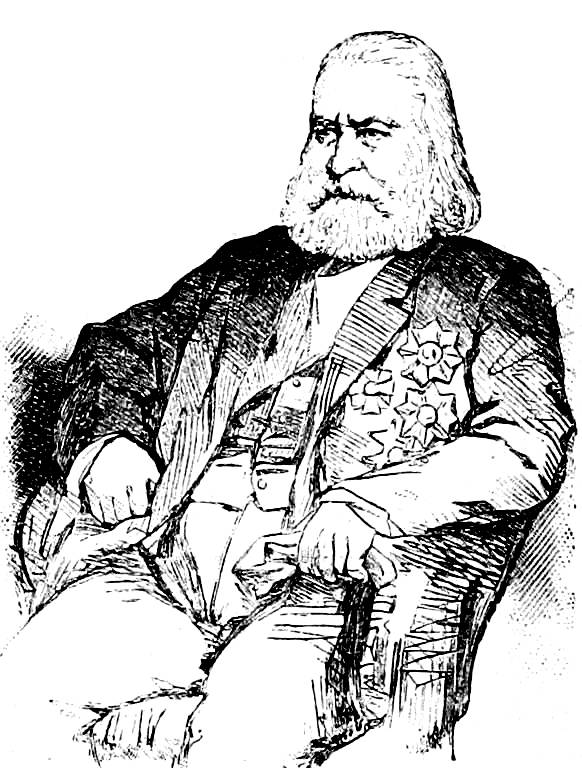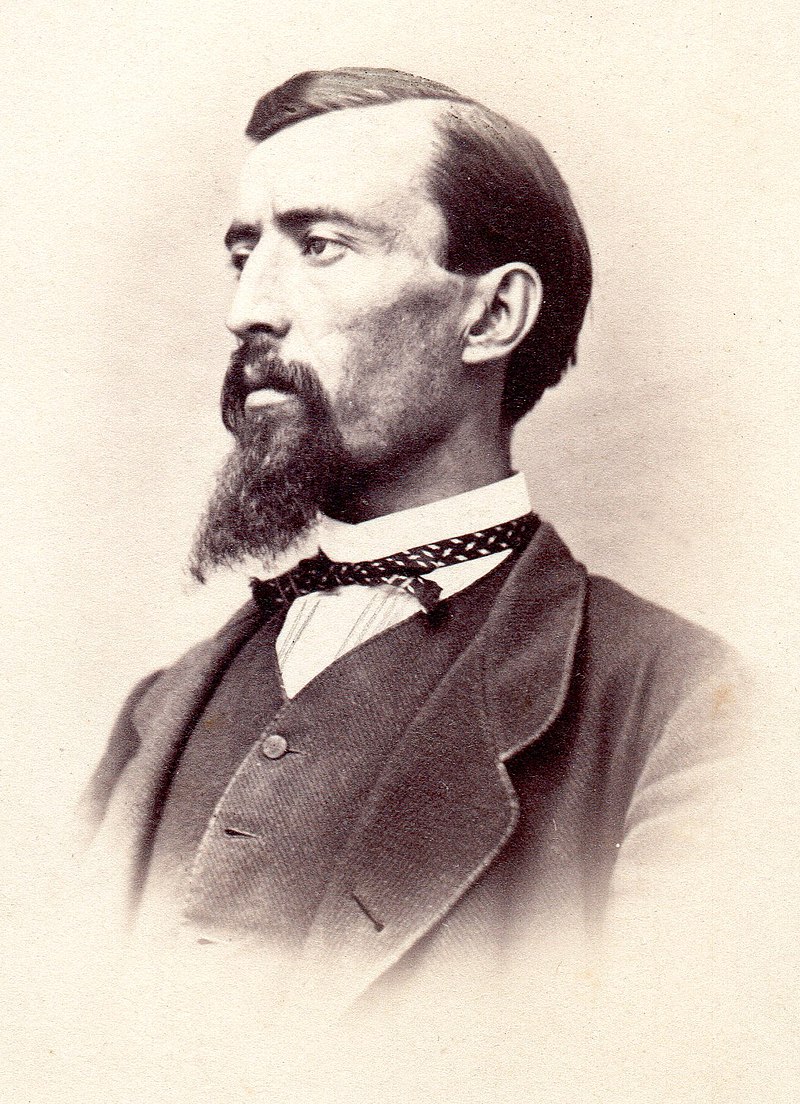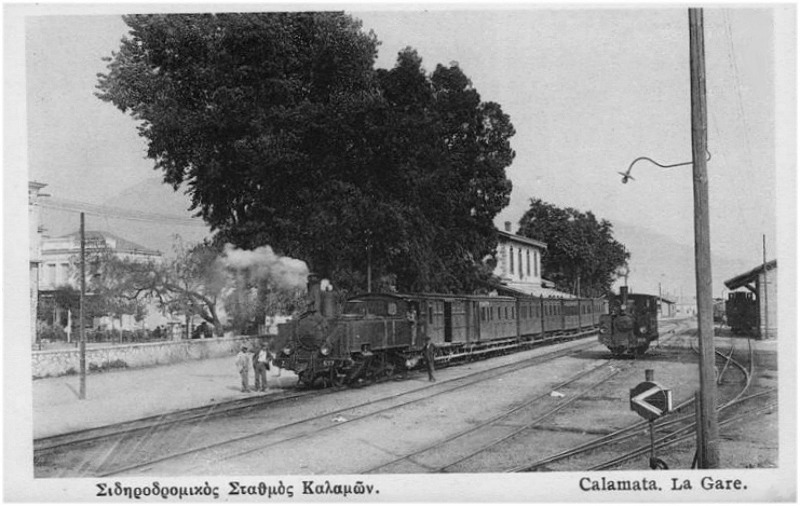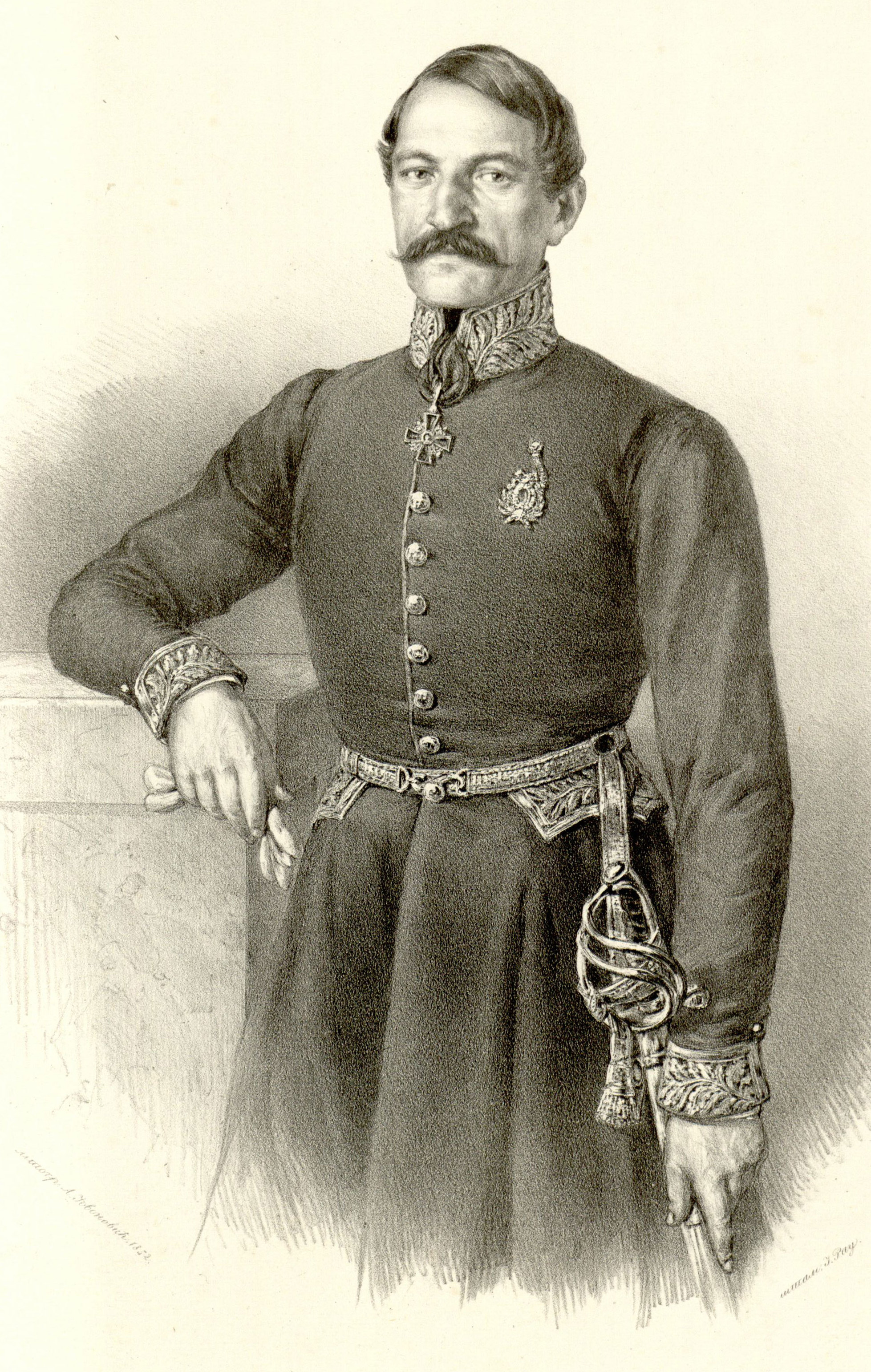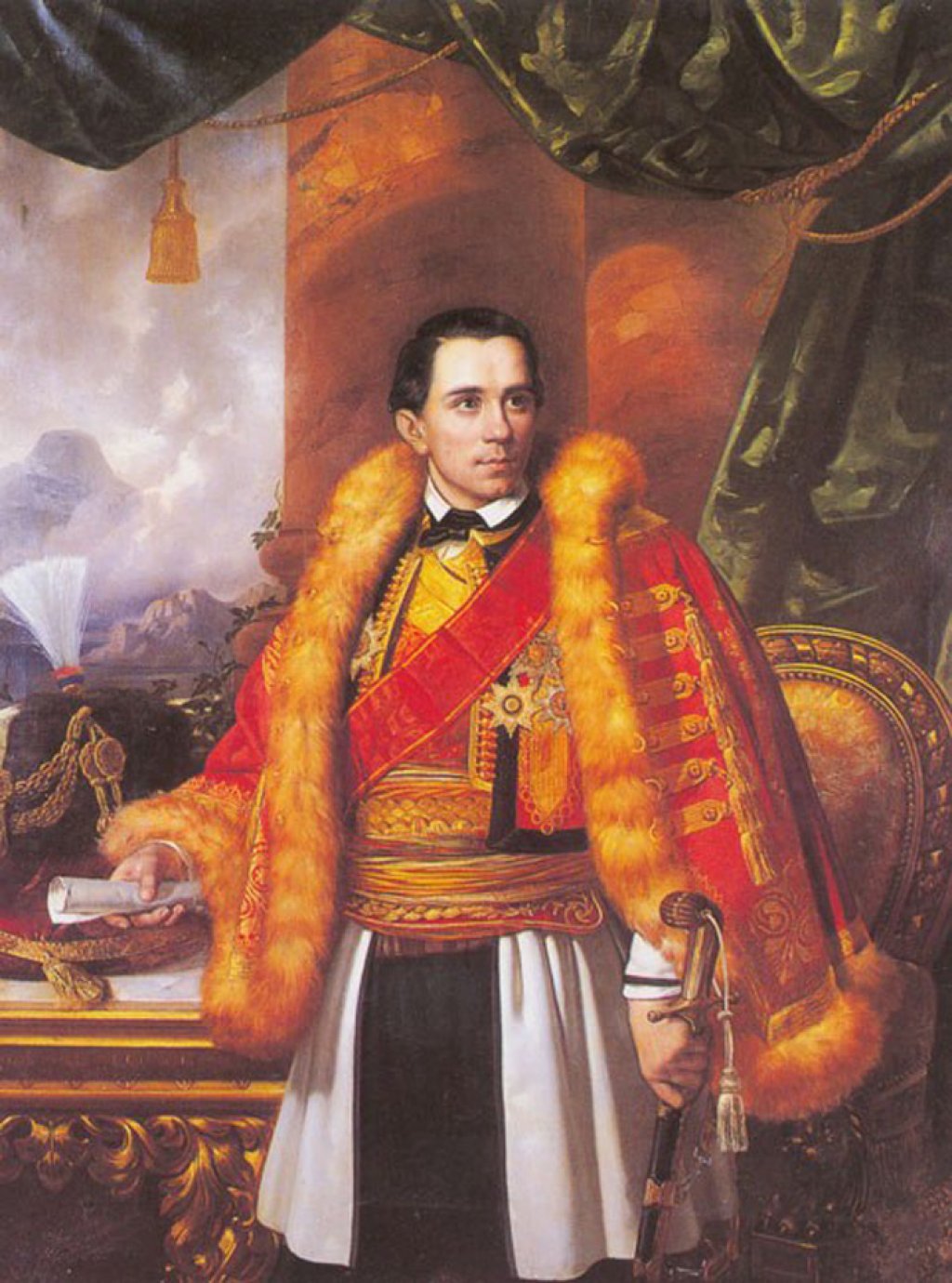Chapter 81: A Global War

The British Baltic Fleet off the Coast of Finland
In many ways, 1855 would be the high-water mark for the United Kingdom of Great Britain and Ireland in the Great Eurasian War as it brought the full might of its Empire to bare against the Russians. As the main theater of the war, the bulk of Britain’s resources would go towards the Ottoman Empire as the British Expeditionary Force - originally consisting of the 1st Infantry Division and the Regiment of Royal Horse Guards - was reinforced substantially with the arrival of the 2nd and 3rd Infantry Divisions, and the remainder of the Cavalry Division over the Winter and Spring. The 4th Infantry Division and the Light Division would also be mustered later that Spring, joining their comrades by the end of the Summer. All told the number of British soldiers in the Balkans would rise fourfold from 18,000 men in the Fall of 1854 to over 78,000 men by the middle of August 1855, making it the single largest concentration of British soldiers since the Napoleonic Wars.
In addition to this, the British Empire formed two Naval Brigades (comprised of Royal Marines and sailors from the Royal Navy's Mediterranean Fleet) stationed in Thrace and Northern Anatolia. They would be tasked with raiding Russian possessions along the Black Sea coast, harassing their lines of supply, and cutting their lines of communication to the front. They would also attempt to open lines of supply and communication with their nominal allies, the Circassian Confederation and the Caucasian Imamate through their capture of Fort Navaginsky in the Summer of 1854, flooding the Kuban with weapons, munitions, food, clothing, and coin. While this buildup of military assets in the Balkans and Anatolia was certainly a welcome development for the Ottoman Empire, Britain’s main objective in 1855 would be to expand the war away from the lands of the Sublime Porte and into those of the Russian Empire itself.
The British had begun to do just this in the August of 1854 as the Royal Navy’s Baltic Squadron entered the Baltic Sea unopposed, scared the Russian Baltic Fleet into hiding, and blockaded Russian ports across the region. They would even survey the fortresses of Sveaborg and Kronstadt for any weaknesses, but would ultimately withdrawal to Spithead, Hampshire before the sea froze over in early October. Despite the brevity of the 1854 Baltic campaign, the results were rather impressive, as many thousands of Russian soldiers slated for deployment along the Danube were instead ordered North to guard the Gulf of Finland against potential British incursions. Moreover, the damage to the Russian economy was immense as the great entrepots of Riga, Reval, and St. Petersburg were blockaded by the Royal Navy, effectively silencing Russian commerce in the Baltic.
Encouraged by the prior year’s successes, the British would double down on the Baltic Front in 1855 as the Admiralty allocated a monstrous flotilla of 93 warships to the Baltic Squadron and tasked it with liberating the Åland Islands and the coast of Finland if possible. This fleet sent to the Baltic in 1855 would also represent the most advanced flotilla of the Royal Navy, sporting newly developed 32-pounder cannons, 68-pounder Lancaster guns, and 24 steamships, including the imposing 131-gun HMS Windsor Castle. They would even assign their most experienced Admiral to command it, Sir Charles Napier, signifying the great importance that this mission had in the eyes of Westminster.

Sir Charles Napier, Commander of the British Baltic Fleet
While some would preface the British campaign in the Baltic as a necessary step towards a future coup de main against St. Petersburg - which it theoretically was, the real objective behind Britain’s Baltic thrust in 1855 was to attract allies to its side in its war against Russia. Many within Westminster believed that a strong British presence in the Baltic Sea and the capture of a few islands would be enough to entice the Kingdom of Prussia and the United Kingdom of Sweden and Norway into the war against Russia as British allies. With its professional and relatively large army, Prussia would be a great boon to the Anti-Russian Coalition, while Sweden’s support was particularly important as St. Petersburg could not be truly threatened without Stockholm’s support, nor could Britain hold any captured Baltic territory to entice Prussia without Swedish assistance.
There was also strong consideration given to instigating another revolt among the Polish, Lithuanian, Estonian and Latvian peoples of the Russian Empire, which the British could support through a campaign in the Baltic. The Poles were certainly receptive to the idea as their hatred for Russian rule was well knowned across Europe, however, Britain’s failure to adequately support the last Polish Rebellion in 1848 had significantly weakened support for Britain among the Polish community. More than that though, many Poles had been killed or exiled in the last war and their ability to assemble and legally own armaments had been greatly reduced following the suppression of the recent revolt. Simply put, although the Poles likely had the will to rebel against the Russians, they lacked the means and ability to do so on the same scale as the 1848 Rebellion.
Such an overture to the Poles also ran the risk of antagonizing the Austrians and Prussians who were both formally allies of Russia, yet presently neutral in the current war. Were Britain to overtly support another Polish uprising, they risked provoking Austrian and/or Prussian intervention against Britain, thus dooming their current . Ultimately, the idea of instigating another Polish revolt was shelved. Therefore, the British Baltic Strategy in 1855 would largely be limited to raiding, blockading, and bombarding Russia’s Baltic coast from Courland to Oulu and everything in between. Once the ice had finally begun to melt in late April, the Admiralty ordered the greatly strengthened Baltic Fleet to set out for the Baltic.[1]
Their first target would be the Åland Archipelago located between Sweden and Finland, with the fortress of Bomarsund being their primary objective of this first assault. The main structure of the fortress was an imposing building with its curved granite cyclopean walls and its 162 casemates (most of which faced towards the sea). The fortress would have also featured 14 roundel guard towers surrounding Bomarsund proper, but by the time the British arrived in Lumparn Bay on the 8th of May only three had been finished, while a fourth was in the midst of construction. The fortress was also located on the flatlands near the shore rather than the nearby hills, which combined with the rather poor range of its guns made it a good target for a concentrated naval bombardment.

Bomarsund Fortress
Taking this into account, Admiral Napier would immediately open fire on the citadel as soon as his ships came into firing range, striking the walls of Bomarsund with nearly 20,000 shells in less than two short hours. Despite this impressive show of force and material might, the scattershot bombardment had done remarkably little damage to the fortress’ stout walls which steadfastly withstood the British attack. Unwilling to needlessly endanger his ships by advancing any closer, Napier instead ordered the fleet to pull back while they pursued other avenues of reducing Bomarsund.
In the ensuing days, Napier’s main contingent of ships would establish a tight blockade of Fasta Åland, preventing the Russian garrison from being resupplied or reinforced, while his deputies seized the neighboring islands in the archipelago. This blockade would hurt the Russians mightily as their food supplies soon began to run out. Faced with starvation, many resorted to eating their horses, dogs and cats, and even rodents found within the fortresses’ walls to sate their increasing hunger. Their stores of gunpowder and munitions were also running low, but when Napier pressed them to surrender after two weeks of blockade, the Russians boldly refused, firing all their seaward guns at once in defiance.
This standoff would continue for nearly four weeks until a largely undefended inlet leading behind the main fortress was discovered. From this shallow inlet, the British could safely fire upon the rear of the fortress which was not as well protected as the seaward side - its only defense being a single roundel called Notvik Tower.[2] Upon learning of this, Admiral Napier immediately ordered his shallower draft steamships to traverse through the narrow inlet, while the remaining ships would remain in front of the fortress, continuing the barrage from afar. Simultaneously, a third group of sailors and marines would land far to the West of Bomarsund, near the fishing hovel of Estvik and drag several 32 pounders and howitzers into position on the heights above the fortress.
Once in position, Napier signaled his steamships to open fire on the granite walls of Bomarsund from the near, releasing a withering enfilade upon the Russian defenders in Notvik tower, which was reduced to rubble within mere moments. The bombardment on the main fortress commenced soon after as the mighty ships of the line opened fire on Bomarsund. Like before, the damage inflicted on the fort was rather minimal, but with the British attacking from two separate directions the Russians’ already meager resources were divided in two. The Russians’ position soon became worse as the British sailors and marines would finally finish hauling their guns into position above the fortress by midday and immediately opened fire on Brännklint Tower which was quickly destroyed much like its counterpart, Notvik Tower. Soon after the Naval Brigade would set their sights upon Bomarsund itself, raining cannonballs down into the fortress’ interior.

The Bombardment of Bomarsund
The bombardment that followed was relatively brief, lasting only a few short hours as 1261 guns of the British Baltic Squadron pounded the Fortress’s defenses into dust. The blistering cannonade blew holes out of the walls of Bomarsund and successfully silenced all but 11 of the fortresses’ 162 casemates, many of which couldn’t retaliate given the oblong shape of the fortress. With his losses mounting, his defenses crumbling, and his ability to resist quickly diminishing, the Russian commandant, Colonel Yakov Badisko ordered his garrison to strike their colors and surrender to the British bringing an end to the battle.
The fall of Bomarsund would spell the end of Russian resistance in the Åland Archipelago as the few remaining holdouts either surrendered to the British or fled to nearby Finland in the following days. Overall, the battle of Bomarsund was a minor victory for Great Britain in the grand scheme of things as it would do little to convince the Swedes to join the war on its own. However, it would help kick start negotiations with Sweden which had been stalled for the better part of the past year. Sweden had initially refused to involve itself in the war when first approached by Britain in early 1854, having long since written off their claims to Finland and not wishing to antagonize Russia. Yet, when they learned of the supposedly indomitable Bomarsund’s capitulation, the Swedish Government began changing its tune in favor of intervention especially as public sentiment was widely in favor of Scandinavism.
Although Scandinavism was nothing new, it had been greatly strengthened by the success of their counterparts in Germany and Italy in the 1848 Revolutions, prompting Swedish and Norwegian nationalists to begin stirring for a stronger union between their two countries. They called for the abolition of trade barriers between their two states, the amendment of the Acts of Union, the abolition of the office of Viceroy for the Kingdom of Norway, the creation of a permanent Union Legislature, and ultimately, the reform of the two states into one new state, Scandinavia.
The conservative Swedish Government would initially oppose these demands, as it would effectively end their admittedly nominal dominance over Norway, but as pressure continued to build against them, they gradually gave way, abolishing their internal trade barriers with Norway in 1849, dissolving the hated Viceroyalty of Norway in 1851, and establishing a shared Ministry of Foreign Affairs in 1854. The Norwegian Government was similarly pressured into a tighter union following these concessions by Sweden, leading to the ending of their own trade barriers and a minor revision to the Acts of Union in 1855 resulting in closer cooperation with the Swedish Government. Despite the fervor of the Scandinavian nationalists, and these initial concessions by the Swedish and Norwegian governments, it would take more time before their aspirations came to reality.

The New Flag of Sweden and Norway
Although much of this debate was centered on Sweden and Norway, there was also considerable thought given to including the Kingdom of Denmark in this burgeoning Scandinavian Union. Acting on feelings of kinship, Sweden-Norway would side in favor of Denmark during the 1848-1849 Schleswig War, sending a contingent of Swedish and Norwegian troops to aid the Danes during the closing months of the conflict, however their involvement was strictly limited to Danish territory and were not sent to the disputed Duchy of Holstein. Sweden would also play a prominent role in mediating the Peace talks between the German rebels and the Danish Government ending the conflict. Following the war, the two states would sign a series of trade deals and agree to a defensive pact with one another, they would also dispatch a pair of cultural missions to each other’s country all in the name of fraternity and Scandinavism.
With Denmark and Sweden-Norway becoming closer after 1848, some Scandinavian Nationalists believed Union was inevitable and began considering the expansion of Scandinavia to include Iceland, Greenland and Finland as well (Nordism). But given Russia’s great strength, the latter was deemed impossible and tabled for the time being. However, when war between Russia and Britain erupted in mid-1854, many within Sweden-Norway considered this as a golden opportunity to win Finland’s liberation from barbarian occupation. Further successes by Britain in the Baltic in 1855 capturing Bomarsund and the Åland Archipelago in May, followed by the neighboring Åboland Islands and reducing the defenses of Hanko and Turnu in the following weeks would only heighten these feelings further resulting in public demonstrations in favor of war with Russia.
Ultimately, by the end of September 1855, King Oskar and his representatives finally presented a tangible list of demands to British Ambassador Sir Arthur Magenis for Sweden-Norway’s entrance into the war against Russia. Among other things, Sweden called for the immediate annexation of the Åland Archipelago (currently under British occupation), the Grand Duchy of Finland, a guarantee of British protection against Russian aggression in the future, a loan of 10,000,000 Sovereigns (paid out in three installments over the next three years), and the deployment of nearly 40,000 British troops to the Baltic during the present conflict.[3] Perhaps most crucially, however, the Swedish Government stated that it would only join the war alongside Britain if Prussia could be brought on board as part of a broader coalition against the Russians.
Although Palmerston was agreeable towards Sweden’s territorial claims as part of his greater effort to dismantle the Russian Empire and drive it to the fringes of Europe, he was less so of their other demands. The loan, while certainly large, was not a problem in and of itself, but when combined with Britain’s considerable financial commitments to the Ottoman Empire and their other allies, it would be an increasing strain on the British Empire’s coffers. The guarantee of Sweden’s independence was more contested, however, as it would create a lasting entanglement with a continental power that Britain had historically avoided in the past. Most of all, despite Palmerston’s boastings of a Pan-European front against Russia, Lord Clarendon and the Foreign Office were quite pessimistic of gaining Prussian support against Russia. A considerable amount of coin had already been spent in Berlin and Vienna to buy their favor, but it would take time before these efforts would bare any fruit. Unable or unwilling to fulfill these terms at present, the negotiations between Britain and Sweden came to a halt, for now.

The Barbarian Menace Marches West; Europe Rises to Meet it!
-British Propaganda depicting Russia as a harbinger of death and barbarism.
Undeterred by the slow progress with Sweden-Norway, Lord Clarendon and the Foreign Office would work wonders elsewhere on behalf of the Empire in 1855. As mentioned before, the British would narrowly avoid war with the Kingdom of Greece when it traded the Ionian Islands -along with several provinces of the Ottoman Empire – for its continued neutrality and logistical support. While they had succeeded in averting one crisis, they very nearly sparked another as the Sublime Porte was none too pleased with Britain’s diplomacy. To smooth over the ruffled feathers in Kostantîniyye, Britain would open its lines of credit to the Ottoman Government, along with a sizeable loan of ten million Sovereigns up front and another 5 million in 1856 to support the Turkish war effort.[4]
The Foreign Office would also approach the Second French Empire to help arm the Ottomans Nizamis with their new rifles, the high quality Minié Rifle. Although France was formally neutral in the conflict between Russia and Britain, Emperor Napoleon was partial to the British having spent several years living in the country. He was also deeply concerned by Russian advances into the Balkans and Anatolia, advances which he considered a threat to French interests in the Eastern Mediterranean.
With his rule secured and his country at peace, the transfer of several thousand excess rifles and cannons to the Ottomans was of little consequence for the French Emperor who readily agreed to Clarendon's request. Together with his Minister of War, Marshal Bernard Pierre Magnan, and his Minister of Finance, Jean-Martial Bineau they would scrounge together nearly 46,000 Minié rifles and roughly half a million Minié balls which would be shipped to the Ottoman Empire for a “reasonable” fee. They would also provide the Turks with 40 newly developed Canon de L' Aigle field guns in order to gauge their potency in combat against the Russians.
Beyond this, they would meet with some moderate success recruiting allies from among the Germans and Italians, with several thousand volunteering to assist the British and Ottomans in their fight against Russia. However, their efforts to construct a coalition of concerned powers to combat the “Barbarian Menace” was thwarted by indifference and fear. Aside from Sweden, the British would attempt to woo France, Prussia and Austria to little or no effect with the latter two barred from doing so by treaty and France by politics. Moving on, they would look to the countries of the Italian Confederation and the German Empire, which while supportive of Britain’s aspirations, lacked the means to truly aid them in their efforts. Lombardia-Piedmont would however, dispatch a token force to assist the British and Ottomans, but it would be primarily concentrated in the Balkans where it generally played a supporting role. Looking further afield, Clarendon and the Foreign Office would approach the nascent Kingdom of Hungary in an attempt to bring it into the Anti-Russian Coalition.

George Villiers, 4th Earl of Clarendon and British Secretary of State for Foreign Affairs
Hungary was no stranger to hostilities with the Russians, having fought against them in the Hungarian War of Independence just five years prior. Many hundreds and thousands of Hungarians had died fighting Russian encroachment into Galicia-Lodomeria and many more had died protecting the Hungarian homeland in the Carpathian Mountains. Similarly, Russia held a great contempt for Hungary which had defiantly supported and defended the Poles in 1849 and 1850. In retaliation, the Tsar refused to acknowledge Hungarian Independence, recalling the Russian consuls from Buda, and ordering that all maps in Russia continue to depict Hungary as a province of the Austrian Empire.
For their part, Hungarian King Louis III (Count Lajos Batthyány), Prime Minister Lajos Kossuth, and the Hungarian Government would prove to be quite receptive to the idea of war, as Russia’s encroachment into the Balkans was an existential threat to the young state. Although not its intention – at least initially, Russia’s provocations of Pan-Slavic revolts across the Balkans had proven quite unsettling for the Kingdom of Hungary which lorded over several million Slavs (Serbs, Slovaks, and Croats) itself. Protests had emerged in Transylvania and Banat, forcing the beleaguered Hungarian Army to pacify these borderlands at great cost. Were Russia to win in its present conflict against the Turks, then th “liberation” of Hungary’s oppressed Slavic peoples would almost certainly be the next target of Russian aggression, bringing the Hungarian state to an untimely demise. Even if Russia were not to attack them directly, Russia’s occupation of the Danubian Principalities would be still be a great disaster for Hungary’s economy.
With Croatia surrendered to Austria as the price of its freedom, the Danube River was Hungary’s only remaining link to the sea and thus the global market. Naturally, this made the continued neutrality of the Danubian Principalities an issue of great concern for the Kingdom of Hungary especially in light of the current conflict between Russia and the Ottoman Empire. A Russian victory in the war would almost certainly entail the annexation, or at the very least political, diplomatic, and economic subjugation of the Wallachian and Moldavian Principalities, giving St. Petersburg incredible influence over the Lower Danube from the Iron Gates to the Black Sea. Were this to happen, Buda’s only artery to the outside world would be put in jeopardy, forcing Hungary to kowtow to St. Petersburg’s demands lest its finances be ruined, and its people impoverished.

Map of the Danube (circa 1800)
In spite of these concerns of Russian encroachment, many within Hungary were opposed to antagonizing the Russians any further and wished to remain neutral in the current conflict as they had still not fully recovered from the Hungarian War of Independence. Although nearly five years had passed, the devastation of the War for Independence still lingered across much of the country. Thousands had been slain in battle against the Austrians and Russians, thousands more had been maimed, and an untold number had been left destitute in the fight for Hungarian liberty. Hungary’s standing army was also rather small, at only 62,000 men – with another 120,000 in reserve. Many of these soldiers were preoccupied chasing partisans throughout the hills and mountains of Transylvania and Banat whose populaces would almost certainly rebel against Buda if Hungary went to war against Russia. More than that though, attacking Russia would run the risk of inviting Austrian intervention against them.
Although Vienna had been badly bloodied and battered during the Revolutions of 1848 (losing both Lombardy and Hungary to Revolutionaries and making considerable concessions to the Croats and Czechs), it still remained a considerable power deserving of respect and consideration. Without a guarantee of Austrian neutrality, Hungary could not in good confidence march to war against Russia with a hostile power at its back. Nevertheless, the Hungarian Government remained open to joining the war against Russia if, and only if Austrian neutrality could be confirmed. To London’s and Buda’s aggravation, however, Vienna remained conveniently aloof, as it avoided making a firm decision in favor of either Britain or Russia. Unable to guarantee Austrian neutrality, the negotiations in Buda sadly came to a halt in the Summer of 1855.
While the British could not get the Hungarians to fight alongside them at present, the British envoy to Buda, Lord John Russell would still manage to achieve a similar result without their actual involvement. Contending that the very presence of the Hungarian Honvéd Army on the border with Russian occupied Galicia-Lodomeria and Wallachia would be enough to satisfy Britain’s requests and spit in the eye of Russia at the same time; Prime Minister Kossuth agreed to mobilize the Hungarian Army in late July. Under the pretext of policing their eastern and southern borders against brigands and seditionists, Buda raised some 120,000 Hungarian soldiers to send eastward, conveniently stationing them right on the frontier with Russia.
The sudden presence of the Hungarian Army on their Northern flank would set off alarm bells in the headquarters of Count Ivan Paskevich at the Princely Palace of Bucharest. Ever a cautious man, Paskevich would react swiftly to counter this apparent threat with overwhelming force, dispatching four divisions from the front along the Danube to counter this new threat, while another four would be sent to guard Russia's border with Hungary in Galicia-Lodomeria.[5] After a month of posturing and sabre rattling, the Hungarian Army would stand down, its job finished as the Russian offensive on Silistra had stalled once again (its reserves having been sent north to guard the border with Hungary).
Britain’s last diplomatic success in Europe during 1855 would be the formation of the Polish Legion, a large brigade sized unit of Polish exiles living in Hungary and prisoners of war captured during the fighting in Bulgaria. Many had no love for Russia and willingly signed up with the British and Ottomans as soon as the offer was made. Some, particularly the few Polish officers in Russian service, captured in the fighting around Silistra, required a little more persuasion however, usually in the form of bribes or threats before they would join with the British. To avoid arousing suspicion with Austria and Prussia that this was an Army of Polish Liberation, the unit would officially be christened the Sultan’s Cossack Brigade and fight under the banners of the Sublime Porte.

Members of the Polish Legion
The Ottoman Empire would not be idle in the search for additional allies either as in early February 1855, the Mufti of Constantinople at the urging of the Sublime Porte issued a Fatwa against the Russian Empire, calling on all Muslim faithful to wage war with the heathen Russians. Heeding the call were tens of thousands of Muslims from across the Middle East who flocked to the Ottoman Empire, joining arms with the Turks in their fight against the Russian infidels. Although their quality was dubious, their numbers were greatly appreciated by the beleaguered Turks with nearly 30,000 Moroccans, Algerians, Tunisians, Libyans, Egyptians, Arabs, Syrians and Kurds making the journey to the Ottoman Empire in 1855 alone.
While their numbers were certainly appreciated, they were generally undisciplined and rather poor soldiers, more interested in plunder and glory than discipline and cohesion. More often than not, they would been found plundering Christian villages in the Balkans and Eastern Anatolia, killing the men, raping the women and carting the children away to sell into slavery. They were Ghazis more than soldiers, but in desperate need of more men to throw against the Russians, the Sublime Porte looked the other way much to the chagrin of their Christian subjects. The zeal of holy war would also spread to the Caucasus as Imam Shamil and his followers took the fight to the Christian communities of Ciscaucasia, massacring entire towns in retaliation for Russian transgressions against them.
More important than this, however, was the Porte’s decision to dispatch Mussad Giray, last scion of the Crimean Khanate’s House of Giray to the Crimean Peninsula in the Spring of 1855. With the aid of the British Royal Navy, Giray and his compatriots landed at the relatively undefended Kalamita Bay and set to work organizing a general uprising by the Crimean Tatars against Russian rule. In the span of a few short weeks, Giray would successfully mobilize between 30,000 to 40,000 fighters who were dedicated to driving the Russians from their lands. Their ferocity and animosity were unmatched as they ruthlessly butchered Russian men, women and children by the hundreds. The Greeks and Armenians of the Crimea were not spared either, resulting in a number of deaths at Tatar hands.
Attempts by the Russians to quell the Crimean Tatar revolt were hampered by the Royal Navy and Ottoman Black Sea’s Fleet which frequently raided the Crimean coast with impunity. British and Turkish marines and sailors would seize the initiative on several occasions, swiftly occuppying and destroying the ports of Yevpatoria, Feodosia, and Balaclava before retreating in the face of approaching Russian reinforcements. Combined with the Tatars, the British and Ottoman raids on the Crimean Peninsula ingrained in the Russians a looming sense of invasion by Allies causing Russian civilians to flee in droves. If they had the men to spare, perhaps the British and Ottomans would have attempted such a course of action, but instead their resources were focused elsewhere. Nevertheless, the fear of such an act paralyzed three Russian Divisions which were forced to remain in the Crimea for the remainder of the year.
London and Kostantîniyye would also find great success in Central Asia as the Emirate of Bukhara, and the Khanates of Khiva and Kokand would declare war on the Russian Empire in May of 1855. London and Kostantîniyye had been courting the tribes of Central Asia since the beginning of the War the previous year, but in truth they needed little encouragement as the annexation of the Kazakh Khanate and the subjugation of Khiva in recent years had alarmed them greatly. Fearful of further Russian encroachment into their lands and under the mediation of British and Ottoman diplomats; many of the Uzbeks, Kazakhs, Kyrgis, Tajiks, and Turkmen of Central Asia agreed to temporarily set their differences aside and align with London and Constantinople against the Russian threat.
To aid them in their struggle, Britain would funnel several thousand excess, and largely obsolete, Brown Bess and Baker Rifles to Central Asia, along with a loan of one million Sovereigns to each of the local rulers to help buoy their resolve. Armed with British weapons and flush with British cash, Khiva, Kokand, and Bukhara would muster around 22,000 horsemen and another 20,000 footmen for the Anti-Russian Coalition and swiftly crossed the border into Russian occupied Kazakhstan in the Spring of 1855. Upon crossing the border, they would pillage the steppe far and wide, from the border of Qing China to the shores of the Caspian Sea. In their wake, they left scorched earth, slaughtered flocks, and ruined settlements mirroring the Mongol invasions of the Middle Ages.
Their greatest success, however, would be the capture and destruction of Novopetrovskoe and Guriev. In the case of the latter, the garrison of Guriev was caught completely unprepared by such an audacious attack and were quickly overwhelmed by the Central Asian horsemen and quickly fled to the western half of the city across the Ural River, destroying the city’s bridges in their wake. Those Russian soldiers and settlers unfortunate enough to be left in the eastern half of Guriev were slaughtered by the Central Asian horsemen who left the cobblestone streets awash in blood and bodies. After a day of looting and wanton destruction the riders withdrew as fast as they had arrived. Overall, the damage from the attack on Guriev was quite minimal, only 850 Russian soldiers and civilians would lose their lives in the raid, while a few buildings were burnt to the ground and unmeasured booty was carted off by the attackers.[6] Nevertheless, the boldness of the assault on Guriev, combined with the lacking Russian response encouraged several thousand Kazakhs to rise in revolt across the region, adding their forces to those of the invaders.
For the Russians, the events in Central were a nuisance, a distraction from the main events taking place to the West. As such, minimal resources were allocated to the defense of the region initially. Only after the raid on Guriev and the revolt of the Kazakhs soon after would the Tsarist Government take matters there more seriously, dispatching a Division of Infantry under the command of General Alexander Andreevich Katenin to reinforce the overstretched Separate Orenburg Corps, of which he would assume control in late August. The arrival of the 16th Infantry Division under General Katenin would stabilize the situation, but little else as the Russians continued to prioritize their other fronts in the Caucasus, the Balkans, and the Baltic over Central Asia.

Battle between Russian Soldiers and Kokand Horsemen
If Central Asia received minor interest from St. Petersburg, then their possessions on the Pacific Coast received little to none as the region was effectively written off by the Tsarist Government in the opening days of the war. That is not to say that the Russian Government did not care for this front (they almost certainly did), but given the extreme distances involved, the rather undeveloped nature of the region, and Britain’s unquestioned naval supremacy; they had little recourse against British activities in the Pacific. Operating out of Valparaiso, Chile initially and then Honolulu, Hawaii, the British Royal Navy’s Pacific Station would quickly arrive off the coast of the Kamchatka Peninsula in early May 1855, effectively daring the Russian Okhotsk Military Flotilla to come out and fight them. Believing they had an advantage over the British, the Russians would oblige them.
The British fleet the Russians faced was rather small, numbering only five ships; the frigates President (52 Guns), Trincomalee (46 guns), Amphitrite (46 guns), and Pique (36 guns), and the paddle sloop Virago (6 guns). The Russians in contrast had more ships and more guns with three frigates; the Diana (54 guns), the Pallada (52 guns) and the Aurora (44 guns), the corvette Olivutsa (20 guns), and four converted transport ships, the Dwina (16 guns), the Sitka (14 guns), the Irtysh (10 guns), and Baikal (6 guns). Despite their advantage in numbers and firepower, the Russian fleet was quickly scattered by the Royal Navy in the Battle of Kamchatka on the 11 of May 1855, with most retreating to the safety of Okhotsk where they would remain for the remainder of the war.
However, two Russian ships, the frigate Pallada and the corvette Olivutsa would escape from the battle relatively unscathed and made a beeline for Novo Arkhangelsk, from where they would harass British commerce up and down the Pacific coast of North America. A third ship, the Russian Frigate Aurora would attempt to join them, but as it made its trek east across the sea towards the Aleutian Islands, it would find its path blocked by HMS President and HMS Virago which had actually been chasing Pallada and Olivutsa, only to encounter Aurora by random chance. Deeming his previous goal of reaching Novo Arkhangelsk now compromised, the captain of the Aurora, Lieutenant Commander Ivan Izilmetyev would abrubtly change course, choosing to retreat back to Okhotsk.
The ensuing chase would encompass the better part of the next week as the British and Russian ships traded shots with one another, to relatively little effect. The fifth day of fighting would be different, however, as the Aurora would take a cannonball below the waterline causing it to begin taking on water, while a lucky strike on Virago’s rudder would force it to temporarily abandon the pursuit while they made repairs. HMS President would take a series of blows to its hull and suffer extensive damage to its rigging, but in spite of this it would continue to chase the wounded Russian warship southwest right until it reached the island of Sakhalin. With his ship taking on water and his escape route to the open sea repeatedly blocked, Commander Izilmetyev would make one last attempt to escape his pursuers by traversing the narrow, and largely unknown Strait of Tartary.
Unaware of the strait's existence (they believed it was a bay), HMS President, soon rejoined by HMS Virago, waited for the Aurora to attempt its escape from the mouth of the bay, only for that escape to never come. Having successfully eluded the British ships, Izilmetyev would attempt to make repairs to his ship and set anchor off the coast of Sakhalin, however, his jubilation quickly turned to horror as his ship was soon overcome by Japanese soldiers. The Aurora had unwittingly landed on the Japanese half of the island.
Having only recently started opening itself up to the outside world, Japan was a foreign land for most Europeans as it fiercely guarded its neutrality and isolationism. By landing on the southern half of Sakhalin, the Aurora had -unwittingly - violated Japan’s neutrality for its own gain. While had succeeded in escaping the British, representatives of the Tokogawa Shogunate would soon order the Aurora impounded and its crew detained for the remainder of the war as a penalty for violating their neutrality. Not wishing to spark a diplomatic crisis, HMS President and Virago would patrol the waters off Sakhalin for the better part of two weeks before abandoning their watch and rejoining the main contingent at Petropavlovsk.
As this was taking place, the Royal Navy ships HMS Trincomalee, Amphitrite, and Pique would be joined by Rear Admiral Sir Fairfax Moresby aboard his flagship the Fourth Rate HMS Portland (60 guns) and the sixth rate HMS Imogen (28 guns) significantly bolstering their capabilities. After the Battle of Kamchatka, the fleet would sail to the port of Petropavlovsk located near the southern tip of the peninsula, Russia’s primary port on the Pacific. Moving quickly the British would strike against the town, which had been largely abandoned by the Russian Okhotsk Flotilla after the recent naval battle.
A few townsfolk and sailors from the schooner Andray and transport Bot would attempt to hold off the British attack and even constructed rudimentary gun batteries and redoubts with a half dozen guns that had been hauled off their ships, but under heavy cannon fire from the British fleet they could do little to resist. When sailors and marines from the British fleet landed north of the city, they faced meager resistance from the town’s defenders, ultimately culminating in Petropavlovsk’s surrender on the 28th of May.[7] The capture of Petropavlovsk would be a minor strategic victory for the British as it had largely been evacuated before the British arrived, but it would serve to isolate the Russian Pacific Fleet to the Bay of Okhotsk.
The fighting in the Pacific would also indirectly result in the end of Russian Alaska which would be targeted by the Royal Navy in the aftermath of Petropavlovsk. As the Russian Frigate Pallada and Corvette Olivutsa had escaped to Novo Arkhangelsk, the once forgotten Russian colony soon became a high priority for the British Pacific Station which now moved to subdue it. Together with troops from Fort Victoria, the British fleet would successfully capture Novo Arkhangelsk (Sitka) and Kad’yak (Kodiak) before year’s end, resulting in the capitulation of Russian America. The real objective of this assault, the sinking of the Pallada and Olivutsa in late October would mark the end of major hostilities in the Pacific, as the last remaining threats to Britain in the Pacific– the remaining ships of the Russian Okhotsk Military Flotilla - were blockaded at Okhotsk. Despite the successes London had found on these fronts, their real focus would remain on the Balkans and the Caucasus, whose great battles and campaigns far outweighed these pin prick strikes on Russia’s periphery.
Next Time: Mire of Misery
[1] The British Government seriously considered attacking Russian possessions in the Baltic as a means of gaining Sweden’s support IOTL. However, France was largely dismissive of the endeavor and refused to commit significant resources to the front, beyond a token naval detachment to blockade Russian ports alongside the British Baltic Fleet. Without France ITTL and in desperate need for additional allies, Britain is more willing to pursue this course of action here.
[2] When designing the fortress in the 1820’s and 1830’s, the Russians didn’t anticipate that ships would eventually be able to traverse the shallow waters surrounding Bomarsund, hence the lack of defenses behind it.
[3] This is comparable to the subsidy provided to Sweden during the Napoleonic Wars which was 1 million Sovereigns in 1813.
[4] During the Napoleonic Wars, Britain provided its allies around 22 million Pounds in subsidies in 1813. Adjusted for inflation it comes out to around 14.1 million Pounds in 1855 in OTL. Here Britain would be asked to provide the Ottoman Empire 10,000,000 Pounds Sterling per year and if Sweden were to join the war it would be another 5,000,000 Pounds Sterling per year. While this would be more than Britain provided all of its Coalition Allies at the height of the Napoleonic Wars in 1813, its important to note that the British Economy is much larger and stronger in 1855 than it was in 1813. It will definitely hurt Britain, but it can manage it for a time.
[5] In OTL, Paskevich believed that an attack across the Danube would provoke an Austrian intervention against Russia, resulting in his half-hearted attempts to besiege Silistra in OTL. The collapse of the Austrian Empire ITTL mitigates these fears, resulting in his more determined attack into Ottoman Bulgaria, but he still remains cautious of his Northern flank and moves to secure it when it is threatened.
[6] Guriev was primarily populated by Kazakhs and Tatars throughout most of its history, although by the 19th Century there would be a moderate Russian population, they were primarily located on the Western side of the River in Samara Guriev.
[7] Given its remote location, the city of Petropavlovsk was considered indefensible by the Russians IOTL, who promptly evacuated it in May 1855. Here the final result is more or less the same, except the British take it through force of arms, thus presenting it as this great strategic victory, when in truth its really a minor event.

The British Baltic Fleet off the Coast of Finland
In addition to this, the British Empire formed two Naval Brigades (comprised of Royal Marines and sailors from the Royal Navy's Mediterranean Fleet) stationed in Thrace and Northern Anatolia. They would be tasked with raiding Russian possessions along the Black Sea coast, harassing their lines of supply, and cutting their lines of communication to the front. They would also attempt to open lines of supply and communication with their nominal allies, the Circassian Confederation and the Caucasian Imamate through their capture of Fort Navaginsky in the Summer of 1854, flooding the Kuban with weapons, munitions, food, clothing, and coin. While this buildup of military assets in the Balkans and Anatolia was certainly a welcome development for the Ottoman Empire, Britain’s main objective in 1855 would be to expand the war away from the lands of the Sublime Porte and into those of the Russian Empire itself.
The British had begun to do just this in the August of 1854 as the Royal Navy’s Baltic Squadron entered the Baltic Sea unopposed, scared the Russian Baltic Fleet into hiding, and blockaded Russian ports across the region. They would even survey the fortresses of Sveaborg and Kronstadt for any weaknesses, but would ultimately withdrawal to Spithead, Hampshire before the sea froze over in early October. Despite the brevity of the 1854 Baltic campaign, the results were rather impressive, as many thousands of Russian soldiers slated for deployment along the Danube were instead ordered North to guard the Gulf of Finland against potential British incursions. Moreover, the damage to the Russian economy was immense as the great entrepots of Riga, Reval, and St. Petersburg were blockaded by the Royal Navy, effectively silencing Russian commerce in the Baltic.
Encouraged by the prior year’s successes, the British would double down on the Baltic Front in 1855 as the Admiralty allocated a monstrous flotilla of 93 warships to the Baltic Squadron and tasked it with liberating the Åland Islands and the coast of Finland if possible. This fleet sent to the Baltic in 1855 would also represent the most advanced flotilla of the Royal Navy, sporting newly developed 32-pounder cannons, 68-pounder Lancaster guns, and 24 steamships, including the imposing 131-gun HMS Windsor Castle. They would even assign their most experienced Admiral to command it, Sir Charles Napier, signifying the great importance that this mission had in the eyes of Westminster.

Sir Charles Napier, Commander of the British Baltic Fleet
There was also strong consideration given to instigating another revolt among the Polish, Lithuanian, Estonian and Latvian peoples of the Russian Empire, which the British could support through a campaign in the Baltic. The Poles were certainly receptive to the idea as their hatred for Russian rule was well knowned across Europe, however, Britain’s failure to adequately support the last Polish Rebellion in 1848 had significantly weakened support for Britain among the Polish community. More than that though, many Poles had been killed or exiled in the last war and their ability to assemble and legally own armaments had been greatly reduced following the suppression of the recent revolt. Simply put, although the Poles likely had the will to rebel against the Russians, they lacked the means and ability to do so on the same scale as the 1848 Rebellion.
Such an overture to the Poles also ran the risk of antagonizing the Austrians and Prussians who were both formally allies of Russia, yet presently neutral in the current war. Were Britain to overtly support another Polish uprising, they risked provoking Austrian and/or Prussian intervention against Britain, thus dooming their current . Ultimately, the idea of instigating another Polish revolt was shelved. Therefore, the British Baltic Strategy in 1855 would largely be limited to raiding, blockading, and bombarding Russia’s Baltic coast from Courland to Oulu and everything in between. Once the ice had finally begun to melt in late April, the Admiralty ordered the greatly strengthened Baltic Fleet to set out for the Baltic.[1]
Their first target would be the Åland Archipelago located between Sweden and Finland, with the fortress of Bomarsund being their primary objective of this first assault. The main structure of the fortress was an imposing building with its curved granite cyclopean walls and its 162 casemates (most of which faced towards the sea). The fortress would have also featured 14 roundel guard towers surrounding Bomarsund proper, but by the time the British arrived in Lumparn Bay on the 8th of May only three had been finished, while a fourth was in the midst of construction. The fortress was also located on the flatlands near the shore rather than the nearby hills, which combined with the rather poor range of its guns made it a good target for a concentrated naval bombardment.

Bomarsund Fortress
Taking this into account, Admiral Napier would immediately open fire on the citadel as soon as his ships came into firing range, striking the walls of Bomarsund with nearly 20,000 shells in less than two short hours. Despite this impressive show of force and material might, the scattershot bombardment had done remarkably little damage to the fortress’ stout walls which steadfastly withstood the British attack. Unwilling to needlessly endanger his ships by advancing any closer, Napier instead ordered the fleet to pull back while they pursued other avenues of reducing Bomarsund.
In the ensuing days, Napier’s main contingent of ships would establish a tight blockade of Fasta Åland, preventing the Russian garrison from being resupplied or reinforced, while his deputies seized the neighboring islands in the archipelago. This blockade would hurt the Russians mightily as their food supplies soon began to run out. Faced with starvation, many resorted to eating their horses, dogs and cats, and even rodents found within the fortresses’ walls to sate their increasing hunger. Their stores of gunpowder and munitions were also running low, but when Napier pressed them to surrender after two weeks of blockade, the Russians boldly refused, firing all their seaward guns at once in defiance.
This standoff would continue for nearly four weeks until a largely undefended inlet leading behind the main fortress was discovered. From this shallow inlet, the British could safely fire upon the rear of the fortress which was not as well protected as the seaward side - its only defense being a single roundel called Notvik Tower.[2] Upon learning of this, Admiral Napier immediately ordered his shallower draft steamships to traverse through the narrow inlet, while the remaining ships would remain in front of the fortress, continuing the barrage from afar. Simultaneously, a third group of sailors and marines would land far to the West of Bomarsund, near the fishing hovel of Estvik and drag several 32 pounders and howitzers into position on the heights above the fortress.
Once in position, Napier signaled his steamships to open fire on the granite walls of Bomarsund from the near, releasing a withering enfilade upon the Russian defenders in Notvik tower, which was reduced to rubble within mere moments. The bombardment on the main fortress commenced soon after as the mighty ships of the line opened fire on Bomarsund. Like before, the damage inflicted on the fort was rather minimal, but with the British attacking from two separate directions the Russians’ already meager resources were divided in two. The Russians’ position soon became worse as the British sailors and marines would finally finish hauling their guns into position above the fortress by midday and immediately opened fire on Brännklint Tower which was quickly destroyed much like its counterpart, Notvik Tower. Soon after the Naval Brigade would set their sights upon Bomarsund itself, raining cannonballs down into the fortress’ interior.

The Bombardment of Bomarsund
The bombardment that followed was relatively brief, lasting only a few short hours as 1261 guns of the British Baltic Squadron pounded the Fortress’s defenses into dust. The blistering cannonade blew holes out of the walls of Bomarsund and successfully silenced all but 11 of the fortresses’ 162 casemates, many of which couldn’t retaliate given the oblong shape of the fortress. With his losses mounting, his defenses crumbling, and his ability to resist quickly diminishing, the Russian commandant, Colonel Yakov Badisko ordered his garrison to strike their colors and surrender to the British bringing an end to the battle.
The fall of Bomarsund would spell the end of Russian resistance in the Åland Archipelago as the few remaining holdouts either surrendered to the British or fled to nearby Finland in the following days. Overall, the battle of Bomarsund was a minor victory for Great Britain in the grand scheme of things as it would do little to convince the Swedes to join the war on its own. However, it would help kick start negotiations with Sweden which had been stalled for the better part of the past year. Sweden had initially refused to involve itself in the war when first approached by Britain in early 1854, having long since written off their claims to Finland and not wishing to antagonize Russia. Yet, when they learned of the supposedly indomitable Bomarsund’s capitulation, the Swedish Government began changing its tune in favor of intervention especially as public sentiment was widely in favor of Scandinavism.
Although Scandinavism was nothing new, it had been greatly strengthened by the success of their counterparts in Germany and Italy in the 1848 Revolutions, prompting Swedish and Norwegian nationalists to begin stirring for a stronger union between their two countries. They called for the abolition of trade barriers between their two states, the amendment of the Acts of Union, the abolition of the office of Viceroy for the Kingdom of Norway, the creation of a permanent Union Legislature, and ultimately, the reform of the two states into one new state, Scandinavia.
The conservative Swedish Government would initially oppose these demands, as it would effectively end their admittedly nominal dominance over Norway, but as pressure continued to build against them, they gradually gave way, abolishing their internal trade barriers with Norway in 1849, dissolving the hated Viceroyalty of Norway in 1851, and establishing a shared Ministry of Foreign Affairs in 1854. The Norwegian Government was similarly pressured into a tighter union following these concessions by Sweden, leading to the ending of their own trade barriers and a minor revision to the Acts of Union in 1855 resulting in closer cooperation with the Swedish Government. Despite the fervor of the Scandinavian nationalists, and these initial concessions by the Swedish and Norwegian governments, it would take more time before their aspirations came to reality.

The New Flag of Sweden and Norway
Although much of this debate was centered on Sweden and Norway, there was also considerable thought given to including the Kingdom of Denmark in this burgeoning Scandinavian Union. Acting on feelings of kinship, Sweden-Norway would side in favor of Denmark during the 1848-1849 Schleswig War, sending a contingent of Swedish and Norwegian troops to aid the Danes during the closing months of the conflict, however their involvement was strictly limited to Danish territory and were not sent to the disputed Duchy of Holstein. Sweden would also play a prominent role in mediating the Peace talks between the German rebels and the Danish Government ending the conflict. Following the war, the two states would sign a series of trade deals and agree to a defensive pact with one another, they would also dispatch a pair of cultural missions to each other’s country all in the name of fraternity and Scandinavism.
With Denmark and Sweden-Norway becoming closer after 1848, some Scandinavian Nationalists believed Union was inevitable and began considering the expansion of Scandinavia to include Iceland, Greenland and Finland as well (Nordism). But given Russia’s great strength, the latter was deemed impossible and tabled for the time being. However, when war between Russia and Britain erupted in mid-1854, many within Sweden-Norway considered this as a golden opportunity to win Finland’s liberation from barbarian occupation. Further successes by Britain in the Baltic in 1855 capturing Bomarsund and the Åland Archipelago in May, followed by the neighboring Åboland Islands and reducing the defenses of Hanko and Turnu in the following weeks would only heighten these feelings further resulting in public demonstrations in favor of war with Russia.
Ultimately, by the end of September 1855, King Oskar and his representatives finally presented a tangible list of demands to British Ambassador Sir Arthur Magenis for Sweden-Norway’s entrance into the war against Russia. Among other things, Sweden called for the immediate annexation of the Åland Archipelago (currently under British occupation), the Grand Duchy of Finland, a guarantee of British protection against Russian aggression in the future, a loan of 10,000,000 Sovereigns (paid out in three installments over the next three years), and the deployment of nearly 40,000 British troops to the Baltic during the present conflict.[3] Perhaps most crucially, however, the Swedish Government stated that it would only join the war alongside Britain if Prussia could be brought on board as part of a broader coalition against the Russians.
Although Palmerston was agreeable towards Sweden’s territorial claims as part of his greater effort to dismantle the Russian Empire and drive it to the fringes of Europe, he was less so of their other demands. The loan, while certainly large, was not a problem in and of itself, but when combined with Britain’s considerable financial commitments to the Ottoman Empire and their other allies, it would be an increasing strain on the British Empire’s coffers. The guarantee of Sweden’s independence was more contested, however, as it would create a lasting entanglement with a continental power that Britain had historically avoided in the past. Most of all, despite Palmerston’s boastings of a Pan-European front against Russia, Lord Clarendon and the Foreign Office were quite pessimistic of gaining Prussian support against Russia. A considerable amount of coin had already been spent in Berlin and Vienna to buy their favor, but it would take time before these efforts would bare any fruit. Unable or unwilling to fulfill these terms at present, the negotiations between Britain and Sweden came to a halt, for now.

The Barbarian Menace Marches West; Europe Rises to Meet it!
-British Propaganda depicting Russia as a harbinger of death and barbarism.
Undeterred by the slow progress with Sweden-Norway, Lord Clarendon and the Foreign Office would work wonders elsewhere on behalf of the Empire in 1855. As mentioned before, the British would narrowly avoid war with the Kingdom of Greece when it traded the Ionian Islands -along with several provinces of the Ottoman Empire – for its continued neutrality and logistical support. While they had succeeded in averting one crisis, they very nearly sparked another as the Sublime Porte was none too pleased with Britain’s diplomacy. To smooth over the ruffled feathers in Kostantîniyye, Britain would open its lines of credit to the Ottoman Government, along with a sizeable loan of ten million Sovereigns up front and another 5 million in 1856 to support the Turkish war effort.[4]
The Foreign Office would also approach the Second French Empire to help arm the Ottomans Nizamis with their new rifles, the high quality Minié Rifle. Although France was formally neutral in the conflict between Russia and Britain, Emperor Napoleon was partial to the British having spent several years living in the country. He was also deeply concerned by Russian advances into the Balkans and Anatolia, advances which he considered a threat to French interests in the Eastern Mediterranean.
With his rule secured and his country at peace, the transfer of several thousand excess rifles and cannons to the Ottomans was of little consequence for the French Emperor who readily agreed to Clarendon's request. Together with his Minister of War, Marshal Bernard Pierre Magnan, and his Minister of Finance, Jean-Martial Bineau they would scrounge together nearly 46,000 Minié rifles and roughly half a million Minié balls which would be shipped to the Ottoman Empire for a “reasonable” fee. They would also provide the Turks with 40 newly developed Canon de L' Aigle field guns in order to gauge their potency in combat against the Russians.
Beyond this, they would meet with some moderate success recruiting allies from among the Germans and Italians, with several thousand volunteering to assist the British and Ottomans in their fight against Russia. However, their efforts to construct a coalition of concerned powers to combat the “Barbarian Menace” was thwarted by indifference and fear. Aside from Sweden, the British would attempt to woo France, Prussia and Austria to little or no effect with the latter two barred from doing so by treaty and France by politics. Moving on, they would look to the countries of the Italian Confederation and the German Empire, which while supportive of Britain’s aspirations, lacked the means to truly aid them in their efforts. Lombardia-Piedmont would however, dispatch a token force to assist the British and Ottomans, but it would be primarily concentrated in the Balkans where it generally played a supporting role. Looking further afield, Clarendon and the Foreign Office would approach the nascent Kingdom of Hungary in an attempt to bring it into the Anti-Russian Coalition.

George Villiers, 4th Earl of Clarendon and British Secretary of State for Foreign Affairs
Hungary was no stranger to hostilities with the Russians, having fought against them in the Hungarian War of Independence just five years prior. Many hundreds and thousands of Hungarians had died fighting Russian encroachment into Galicia-Lodomeria and many more had died protecting the Hungarian homeland in the Carpathian Mountains. Similarly, Russia held a great contempt for Hungary which had defiantly supported and defended the Poles in 1849 and 1850. In retaliation, the Tsar refused to acknowledge Hungarian Independence, recalling the Russian consuls from Buda, and ordering that all maps in Russia continue to depict Hungary as a province of the Austrian Empire.
For their part, Hungarian King Louis III (Count Lajos Batthyány), Prime Minister Lajos Kossuth, and the Hungarian Government would prove to be quite receptive to the idea of war, as Russia’s encroachment into the Balkans was an existential threat to the young state. Although not its intention – at least initially, Russia’s provocations of Pan-Slavic revolts across the Balkans had proven quite unsettling for the Kingdom of Hungary which lorded over several million Slavs (Serbs, Slovaks, and Croats) itself. Protests had emerged in Transylvania and Banat, forcing the beleaguered Hungarian Army to pacify these borderlands at great cost. Were Russia to win in its present conflict against the Turks, then th “liberation” of Hungary’s oppressed Slavic peoples would almost certainly be the next target of Russian aggression, bringing the Hungarian state to an untimely demise. Even if Russia were not to attack them directly, Russia’s occupation of the Danubian Principalities would be still be a great disaster for Hungary’s economy.
With Croatia surrendered to Austria as the price of its freedom, the Danube River was Hungary’s only remaining link to the sea and thus the global market. Naturally, this made the continued neutrality of the Danubian Principalities an issue of great concern for the Kingdom of Hungary especially in light of the current conflict between Russia and the Ottoman Empire. A Russian victory in the war would almost certainly entail the annexation, or at the very least political, diplomatic, and economic subjugation of the Wallachian and Moldavian Principalities, giving St. Petersburg incredible influence over the Lower Danube from the Iron Gates to the Black Sea. Were this to happen, Buda’s only artery to the outside world would be put in jeopardy, forcing Hungary to kowtow to St. Petersburg’s demands lest its finances be ruined, and its people impoverished.

Map of the Danube (circa 1800)
In spite of these concerns of Russian encroachment, many within Hungary were opposed to antagonizing the Russians any further and wished to remain neutral in the current conflict as they had still not fully recovered from the Hungarian War of Independence. Although nearly five years had passed, the devastation of the War for Independence still lingered across much of the country. Thousands had been slain in battle against the Austrians and Russians, thousands more had been maimed, and an untold number had been left destitute in the fight for Hungarian liberty. Hungary’s standing army was also rather small, at only 62,000 men – with another 120,000 in reserve. Many of these soldiers were preoccupied chasing partisans throughout the hills and mountains of Transylvania and Banat whose populaces would almost certainly rebel against Buda if Hungary went to war against Russia. More than that though, attacking Russia would run the risk of inviting Austrian intervention against them.
Although Vienna had been badly bloodied and battered during the Revolutions of 1848 (losing both Lombardy and Hungary to Revolutionaries and making considerable concessions to the Croats and Czechs), it still remained a considerable power deserving of respect and consideration. Without a guarantee of Austrian neutrality, Hungary could not in good confidence march to war against Russia with a hostile power at its back. Nevertheless, the Hungarian Government remained open to joining the war against Russia if, and only if Austrian neutrality could be confirmed. To London’s and Buda’s aggravation, however, Vienna remained conveniently aloof, as it avoided making a firm decision in favor of either Britain or Russia. Unable to guarantee Austrian neutrality, the negotiations in Buda sadly came to a halt in the Summer of 1855.
While the British could not get the Hungarians to fight alongside them at present, the British envoy to Buda, Lord John Russell would still manage to achieve a similar result without their actual involvement. Contending that the very presence of the Hungarian Honvéd Army on the border with Russian occupied Galicia-Lodomeria and Wallachia would be enough to satisfy Britain’s requests and spit in the eye of Russia at the same time; Prime Minister Kossuth agreed to mobilize the Hungarian Army in late July. Under the pretext of policing their eastern and southern borders against brigands and seditionists, Buda raised some 120,000 Hungarian soldiers to send eastward, conveniently stationing them right on the frontier with Russia.
The sudden presence of the Hungarian Army on their Northern flank would set off alarm bells in the headquarters of Count Ivan Paskevich at the Princely Palace of Bucharest. Ever a cautious man, Paskevich would react swiftly to counter this apparent threat with overwhelming force, dispatching four divisions from the front along the Danube to counter this new threat, while another four would be sent to guard Russia's border with Hungary in Galicia-Lodomeria.[5] After a month of posturing and sabre rattling, the Hungarian Army would stand down, its job finished as the Russian offensive on Silistra had stalled once again (its reserves having been sent north to guard the border with Hungary).
Britain’s last diplomatic success in Europe during 1855 would be the formation of the Polish Legion, a large brigade sized unit of Polish exiles living in Hungary and prisoners of war captured during the fighting in Bulgaria. Many had no love for Russia and willingly signed up with the British and Ottomans as soon as the offer was made. Some, particularly the few Polish officers in Russian service, captured in the fighting around Silistra, required a little more persuasion however, usually in the form of bribes or threats before they would join with the British. To avoid arousing suspicion with Austria and Prussia that this was an Army of Polish Liberation, the unit would officially be christened the Sultan’s Cossack Brigade and fight under the banners of the Sublime Porte.

Members of the Polish Legion
The Ottoman Empire would not be idle in the search for additional allies either as in early February 1855, the Mufti of Constantinople at the urging of the Sublime Porte issued a Fatwa against the Russian Empire, calling on all Muslim faithful to wage war with the heathen Russians. Heeding the call were tens of thousands of Muslims from across the Middle East who flocked to the Ottoman Empire, joining arms with the Turks in their fight against the Russian infidels. Although their quality was dubious, their numbers were greatly appreciated by the beleaguered Turks with nearly 30,000 Moroccans, Algerians, Tunisians, Libyans, Egyptians, Arabs, Syrians and Kurds making the journey to the Ottoman Empire in 1855 alone.
While their numbers were certainly appreciated, they were generally undisciplined and rather poor soldiers, more interested in plunder and glory than discipline and cohesion. More often than not, they would been found plundering Christian villages in the Balkans and Eastern Anatolia, killing the men, raping the women and carting the children away to sell into slavery. They were Ghazis more than soldiers, but in desperate need of more men to throw against the Russians, the Sublime Porte looked the other way much to the chagrin of their Christian subjects. The zeal of holy war would also spread to the Caucasus as Imam Shamil and his followers took the fight to the Christian communities of Ciscaucasia, massacring entire towns in retaliation for Russian transgressions against them.
More important than this, however, was the Porte’s decision to dispatch Mussad Giray, last scion of the Crimean Khanate’s House of Giray to the Crimean Peninsula in the Spring of 1855. With the aid of the British Royal Navy, Giray and his compatriots landed at the relatively undefended Kalamita Bay and set to work organizing a general uprising by the Crimean Tatars against Russian rule. In the span of a few short weeks, Giray would successfully mobilize between 30,000 to 40,000 fighters who were dedicated to driving the Russians from their lands. Their ferocity and animosity were unmatched as they ruthlessly butchered Russian men, women and children by the hundreds. The Greeks and Armenians of the Crimea were not spared either, resulting in a number of deaths at Tatar hands.
Attempts by the Russians to quell the Crimean Tatar revolt were hampered by the Royal Navy and Ottoman Black Sea’s Fleet which frequently raided the Crimean coast with impunity. British and Turkish marines and sailors would seize the initiative on several occasions, swiftly occuppying and destroying the ports of Yevpatoria, Feodosia, and Balaclava before retreating in the face of approaching Russian reinforcements. Combined with the Tatars, the British and Ottoman raids on the Crimean Peninsula ingrained in the Russians a looming sense of invasion by Allies causing Russian civilians to flee in droves. If they had the men to spare, perhaps the British and Ottomans would have attempted such a course of action, but instead their resources were focused elsewhere. Nevertheless, the fear of such an act paralyzed three Russian Divisions which were forced to remain in the Crimea for the remainder of the year.
London and Kostantîniyye would also find great success in Central Asia as the Emirate of Bukhara, and the Khanates of Khiva and Kokand would declare war on the Russian Empire in May of 1855. London and Kostantîniyye had been courting the tribes of Central Asia since the beginning of the War the previous year, but in truth they needed little encouragement as the annexation of the Kazakh Khanate and the subjugation of Khiva in recent years had alarmed them greatly. Fearful of further Russian encroachment into their lands and under the mediation of British and Ottoman diplomats; many of the Uzbeks, Kazakhs, Kyrgis, Tajiks, and Turkmen of Central Asia agreed to temporarily set their differences aside and align with London and Constantinople against the Russian threat.
To aid them in their struggle, Britain would funnel several thousand excess, and largely obsolete, Brown Bess and Baker Rifles to Central Asia, along with a loan of one million Sovereigns to each of the local rulers to help buoy their resolve. Armed with British weapons and flush with British cash, Khiva, Kokand, and Bukhara would muster around 22,000 horsemen and another 20,000 footmen for the Anti-Russian Coalition and swiftly crossed the border into Russian occupied Kazakhstan in the Spring of 1855. Upon crossing the border, they would pillage the steppe far and wide, from the border of Qing China to the shores of the Caspian Sea. In their wake, they left scorched earth, slaughtered flocks, and ruined settlements mirroring the Mongol invasions of the Middle Ages.
Their greatest success, however, would be the capture and destruction of Novopetrovskoe and Guriev. In the case of the latter, the garrison of Guriev was caught completely unprepared by such an audacious attack and were quickly overwhelmed by the Central Asian horsemen and quickly fled to the western half of the city across the Ural River, destroying the city’s bridges in their wake. Those Russian soldiers and settlers unfortunate enough to be left in the eastern half of Guriev were slaughtered by the Central Asian horsemen who left the cobblestone streets awash in blood and bodies. After a day of looting and wanton destruction the riders withdrew as fast as they had arrived. Overall, the damage from the attack on Guriev was quite minimal, only 850 Russian soldiers and civilians would lose their lives in the raid, while a few buildings were burnt to the ground and unmeasured booty was carted off by the attackers.[6] Nevertheless, the boldness of the assault on Guriev, combined with the lacking Russian response encouraged several thousand Kazakhs to rise in revolt across the region, adding their forces to those of the invaders.
For the Russians, the events in Central were a nuisance, a distraction from the main events taking place to the West. As such, minimal resources were allocated to the defense of the region initially. Only after the raid on Guriev and the revolt of the Kazakhs soon after would the Tsarist Government take matters there more seriously, dispatching a Division of Infantry under the command of General Alexander Andreevich Katenin to reinforce the overstretched Separate Orenburg Corps, of which he would assume control in late August. The arrival of the 16th Infantry Division under General Katenin would stabilize the situation, but little else as the Russians continued to prioritize their other fronts in the Caucasus, the Balkans, and the Baltic over Central Asia.

Battle between Russian Soldiers and Kokand Horsemen
If Central Asia received minor interest from St. Petersburg, then their possessions on the Pacific Coast received little to none as the region was effectively written off by the Tsarist Government in the opening days of the war. That is not to say that the Russian Government did not care for this front (they almost certainly did), but given the extreme distances involved, the rather undeveloped nature of the region, and Britain’s unquestioned naval supremacy; they had little recourse against British activities in the Pacific. Operating out of Valparaiso, Chile initially and then Honolulu, Hawaii, the British Royal Navy’s Pacific Station would quickly arrive off the coast of the Kamchatka Peninsula in early May 1855, effectively daring the Russian Okhotsk Military Flotilla to come out and fight them. Believing they had an advantage over the British, the Russians would oblige them.
The British fleet the Russians faced was rather small, numbering only five ships; the frigates President (52 Guns), Trincomalee (46 guns), Amphitrite (46 guns), and Pique (36 guns), and the paddle sloop Virago (6 guns). The Russians in contrast had more ships and more guns with three frigates; the Diana (54 guns), the Pallada (52 guns) and the Aurora (44 guns), the corvette Olivutsa (20 guns), and four converted transport ships, the Dwina (16 guns), the Sitka (14 guns), the Irtysh (10 guns), and Baikal (6 guns). Despite their advantage in numbers and firepower, the Russian fleet was quickly scattered by the Royal Navy in the Battle of Kamchatka on the 11 of May 1855, with most retreating to the safety of Okhotsk where they would remain for the remainder of the war.
However, two Russian ships, the frigate Pallada and the corvette Olivutsa would escape from the battle relatively unscathed and made a beeline for Novo Arkhangelsk, from where they would harass British commerce up and down the Pacific coast of North America. A third ship, the Russian Frigate Aurora would attempt to join them, but as it made its trek east across the sea towards the Aleutian Islands, it would find its path blocked by HMS President and HMS Virago which had actually been chasing Pallada and Olivutsa, only to encounter Aurora by random chance. Deeming his previous goal of reaching Novo Arkhangelsk now compromised, the captain of the Aurora, Lieutenant Commander Ivan Izilmetyev would abrubtly change course, choosing to retreat back to Okhotsk.
The ensuing chase would encompass the better part of the next week as the British and Russian ships traded shots with one another, to relatively little effect. The fifth day of fighting would be different, however, as the Aurora would take a cannonball below the waterline causing it to begin taking on water, while a lucky strike on Virago’s rudder would force it to temporarily abandon the pursuit while they made repairs. HMS President would take a series of blows to its hull and suffer extensive damage to its rigging, but in spite of this it would continue to chase the wounded Russian warship southwest right until it reached the island of Sakhalin. With his ship taking on water and his escape route to the open sea repeatedly blocked, Commander Izilmetyev would make one last attempt to escape his pursuers by traversing the narrow, and largely unknown Strait of Tartary.
Unaware of the strait's existence (they believed it was a bay), HMS President, soon rejoined by HMS Virago, waited for the Aurora to attempt its escape from the mouth of the bay, only for that escape to never come. Having successfully eluded the British ships, Izilmetyev would attempt to make repairs to his ship and set anchor off the coast of Sakhalin, however, his jubilation quickly turned to horror as his ship was soon overcome by Japanese soldiers. The Aurora had unwittingly landed on the Japanese half of the island.
Having only recently started opening itself up to the outside world, Japan was a foreign land for most Europeans as it fiercely guarded its neutrality and isolationism. By landing on the southern half of Sakhalin, the Aurora had -unwittingly - violated Japan’s neutrality for its own gain. While had succeeded in escaping the British, representatives of the Tokogawa Shogunate would soon order the Aurora impounded and its crew detained for the remainder of the war as a penalty for violating their neutrality. Not wishing to spark a diplomatic crisis, HMS President and Virago would patrol the waters off Sakhalin for the better part of two weeks before abandoning their watch and rejoining the main contingent at Petropavlovsk.
As this was taking place, the Royal Navy ships HMS Trincomalee, Amphitrite, and Pique would be joined by Rear Admiral Sir Fairfax Moresby aboard his flagship the Fourth Rate HMS Portland (60 guns) and the sixth rate HMS Imogen (28 guns) significantly bolstering their capabilities. After the Battle of Kamchatka, the fleet would sail to the port of Petropavlovsk located near the southern tip of the peninsula, Russia’s primary port on the Pacific. Moving quickly the British would strike against the town, which had been largely abandoned by the Russian Okhotsk Flotilla after the recent naval battle.
A few townsfolk and sailors from the schooner Andray and transport Bot would attempt to hold off the British attack and even constructed rudimentary gun batteries and redoubts with a half dozen guns that had been hauled off their ships, but under heavy cannon fire from the British fleet they could do little to resist. When sailors and marines from the British fleet landed north of the city, they faced meager resistance from the town’s defenders, ultimately culminating in Petropavlovsk’s surrender on the 28th of May.[7] The capture of Petropavlovsk would be a minor strategic victory for the British as it had largely been evacuated before the British arrived, but it would serve to isolate the Russian Pacific Fleet to the Bay of Okhotsk.
The fighting in the Pacific would also indirectly result in the end of Russian Alaska which would be targeted by the Royal Navy in the aftermath of Petropavlovsk. As the Russian Frigate Pallada and Corvette Olivutsa had escaped to Novo Arkhangelsk, the once forgotten Russian colony soon became a high priority for the British Pacific Station which now moved to subdue it. Together with troops from Fort Victoria, the British fleet would successfully capture Novo Arkhangelsk (Sitka) and Kad’yak (Kodiak) before year’s end, resulting in the capitulation of Russian America. The real objective of this assault, the sinking of the Pallada and Olivutsa in late October would mark the end of major hostilities in the Pacific, as the last remaining threats to Britain in the Pacific– the remaining ships of the Russian Okhotsk Military Flotilla - were blockaded at Okhotsk. Despite the successes London had found on these fronts, their real focus would remain on the Balkans and the Caucasus, whose great battles and campaigns far outweighed these pin prick strikes on Russia’s periphery.
Next Time: Mire of Misery
[1] The British Government seriously considered attacking Russian possessions in the Baltic as a means of gaining Sweden’s support IOTL. However, France was largely dismissive of the endeavor and refused to commit significant resources to the front, beyond a token naval detachment to blockade Russian ports alongside the British Baltic Fleet. Without France ITTL and in desperate need for additional allies, Britain is more willing to pursue this course of action here.
[2] When designing the fortress in the 1820’s and 1830’s, the Russians didn’t anticipate that ships would eventually be able to traverse the shallow waters surrounding Bomarsund, hence the lack of defenses behind it.
[3] This is comparable to the subsidy provided to Sweden during the Napoleonic Wars which was 1 million Sovereigns in 1813.
[4] During the Napoleonic Wars, Britain provided its allies around 22 million Pounds in subsidies in 1813. Adjusted for inflation it comes out to around 14.1 million Pounds in 1855 in OTL. Here Britain would be asked to provide the Ottoman Empire 10,000,000 Pounds Sterling per year and if Sweden were to join the war it would be another 5,000,000 Pounds Sterling per year. While this would be more than Britain provided all of its Coalition Allies at the height of the Napoleonic Wars in 1813, its important to note that the British Economy is much larger and stronger in 1855 than it was in 1813. It will definitely hurt Britain, but it can manage it for a time.
[5] In OTL, Paskevich believed that an attack across the Danube would provoke an Austrian intervention against Russia, resulting in his half-hearted attempts to besiege Silistra in OTL. The collapse of the Austrian Empire ITTL mitigates these fears, resulting in his more determined attack into Ottoman Bulgaria, but he still remains cautious of his Northern flank and moves to secure it when it is threatened.
[6] Guriev was primarily populated by Kazakhs and Tatars throughout most of its history, although by the 19th Century there would be a moderate Russian population, they were primarily located on the Western side of the River in Samara Guriev.
[7] Given its remote location, the city of Petropavlovsk was considered indefensible by the Russians IOTL, who promptly evacuated it in May 1855. Here the final result is more or less the same, except the British take it through force of arms, thus presenting it as this great strategic victory, when in truth its really a minor event.
Last edited:


